Diabetes
Latest News Regarding Diabetes

21February
2020
Latest Diabetes News THURSDAY, Feb. 20, 2020 (American Heart Association News) — Emerging research may help doctors devise better ways to prevent some of the tens of thousands of amputations unrelated to traumatic injury that occur in the U.S. each year. Diabetes is the leading cause of nontraumatic lower limb amputations, including of the toe and foot. That’s partly because diabetes increases risk of peripheral artery disease, or PAD, a narrowing of major blood vessels in the legs and other areas distant from the heart. But research emphasizes another problem in the mix – microvascular disease, impairment of the tiniest blood vessels, which deliver oxygen and nutrients to tissue. Microvascular disease can damage the eyes (retinopathy), the kidneys (nephropathy) and the nerves (neuropathy). Instead of viewing these as separate conditions, researchers suggest in a new review article that they be considered a potential systemic, or body-wide, dysfunction. The article appeared Thursday in the American Heart Association journal Arteriosclerosis, Thrombosis, and Vascular Biology. Diabetes, along with high blood pressure, can cause large blood vessels to thicken, narrowing their interior, and small vessels to shrivel or disappear, said Dr. Joshua Beckman, director of vascular medicine at Vanderbilt University Medical Center in Nashville, […]
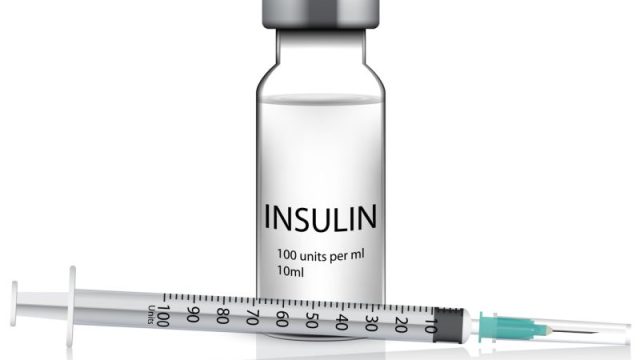
18February
2020
Latest Diabetes News By Serena GordonHealthDay Reporter TUESDAY, Feb. 18, 2020 (HealthDay News) — Maybe you’ve gone to Craigslist to find a used car or a secondhand couch, but imagine having to turn to the internet to pay for lifesaving drugs. It’s already happening: A new study found that hundreds of ads were placed on Craigslist for insulin and asthma inhalers during a 12-day period in June 2019. “This study shines a light on how deeply some patients are struggling to afford lifesaving medications. Patients should not have to go to Craigslist to try to find affordable insulin and inhalers,” said study senior author Dr. Jennifer Goldstein, a research scientist with The Value Institute at ChristianaCare, in Newark, Del. People with type 1 diabetes can’t survive without a steady supply of insulin, which has to be injected. Those with type 2 diabetes who need insulin face a higher risk of serious diabetes complications if they can’t get the insulin they need. But it’s gotten increasingly harder to afford. The American Diabetes Association says the average cost of insulin in the United States nearly tripled between 2002 and 2013. The cost of asthma medications has also risen significantly in a similar […]

14February
2020
Latest Diabetes News FRIDAY, Feb. 14, 2020 (HealthDay News) — More than 322,000 MiniMed 600 Series Insulin Pumps have been recalled by Medtronic due to a defect that could cause them to malfunction and put users at risk for serious harm or death. The recalled devices lack or have a broken retainer ring that helps lock the insulin cartridge into place in the pump’s reservoir compartment. If the cartridge isn’t locked firmly into place, too little or too much insulin may be delivered, which could result in hypoglycemia or hyperglycemia. Severe hyperglycemia can cause loss of consciousness, seizure, and death, the U.S. Food and Drug Administrations said. Medtronic has received 26,421 complaints about malfunctions in the recalled insulin pumps, and is aware of 2,175 injuries and one death. The Class I recall — the most serious type — is for Model 630G (MMT-1715), all lots before October 2019, and for Model 670G (MMT-1780), all lots before August 2019. For information about the recall, consumers can call the 24-hour Medtronic Technical Support line at 877-585-0166. Copyright © 2019 HealthDay. All rights reserved. QUESTION Diabetes is defined best as… See Answer
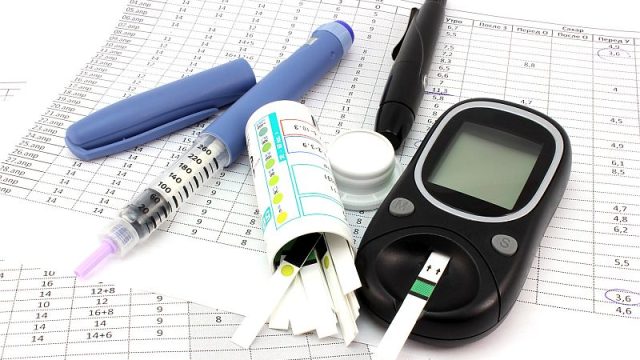
13February
2020
Latest Diabetes News By Serena GordonHealthDay Reporter WEDNESDAY, Feb. 12, 2020 (HealthDay News) — A novel combination of two drugs appeared to spur faster regeneration of insulin-producing beta cells in the pancreas, a preliminary study in mice and human tissue found. Beta cells are crucial to making insulin, a hormone that’s deficient in people with type 1 and type 2 diabetes. The new drug combo pairs an already approved class of type 2 diabetes medications called GLP-1 receptor agonists with an experimental drug called harmine. “In the United States, 30 million people have diabetes. As many as 80 million have prediabetes. Worldwide, there are 400 million people with diabetes. All of those people have inadequate numbers of beta cells,” explained senior study author Dr. Andrew Stewart. He’s director of the Mount Sinai Diabetes, Obesity and Metabolism Institute in New York City. Stewart and his team have been working on developing drugs that will make beta cells regenerate. The hope is that if enough beta cells can be created, people won’t need any additional diabetes treatment. In 2015, the researchers found that harmine could coax the beta cells into regenerating. But only about 2% of cells regenerated in a day. “In […]

13February
2020
Latest Diabetes News THURSDAY, Feb. 13, 2020 (HealthDay News) — Diabetes among U.S. youths continued to rise from 2002 to 2015, especially for Asian children and teens, a new study says. Researchers analyzed type 1 and type 2 diabetes among 5- to 19-year-olds. They found rates were generally higher in blacks and Hispanics than in whites. Surprisingly, the rate in Asian/Pacific Islanders rose faster than in all other racial ethnic groups. “The study results did not surprise us for the white population, which comprises the vast majority of diabetes cases — over 80-90% of cases,” said study lead author Jasmin Divers, a professor at NYU Long Island School of Medicine. “Of great concern was the rapid progression of diabetes among Asian/Pacific Islanders, with those study findings being novel to any prior research, and the results warranting additional close scrutiny and study,” Divers said in a news release from the U.S. Centers for Disease Control and Prevention, which funded the study. Asian/Pacific Islanders are people with origins in the Far East, Southeast Asia, and the Indian subcontinent, or have origins in Hawaii, Samoa, the Marshall Islands and other U.S. territories. Type 1 diabetes among white children and teens rose by 0.7% […]
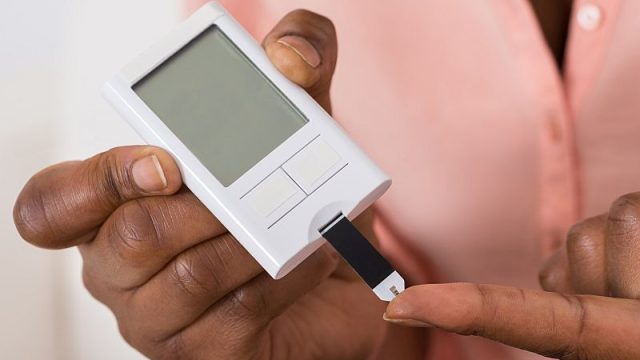
12February
2020
Latest Diabetes News TUESDAY, Feb. 11, 2020 (HealthDay News) — There was a steep drop in the number of low-income people without health insurance in so-called Diabetes Belt states that expanded Medicaid, a new study shows. The Diabetes Belt is a swath of 644 U.S. counties across 15 southeastern states that have high diabetes rates. More than 11% of adults in the Diabetes Belt have the condition, compared with 8.5% outside the belt. It’s believed that diabetes is a major factor in shorter life expectancy. “States that expanded Medicaid achieved an absolute reduction of 20 percentage points in uninsured rates, while states that did not achieved 13% reduction,” the researchers reported. The study examined uninsured rates among adults aged 64 or younger with household incomes equal to or less than 138% percent of the federal poverty line. In 2012, about 39% of people in the Diabetes Belt were uninsured, compared with nearly 34% outside the belt. Those rates fell to 13% and 15%, respectively, in 2016 following implementation of the Affordable Care Act, which allowed states to expand residents’ access to Medicaid. By 2016, uninsured rates were 15% higher in states that had not expanded Medicaid, according to the University […]

7February
2020
Latest Diabetes News By Lisa NainggolanWebMD Health News Feb. 6, 2020 — The FDA says it has no plans to recall any metformin products, used to treat type 2 diabetes, after tests did not show any evidence of contamination with N-nitrosodimethylamine (NDMA) at levels that would cause concern. The FDA began testing samples of metformin for the carcinogen NDMA at the end of last year. Contamination with this substance has led to recalls of blood pressure and heartburn medications within the past 2 years. That announcement came on the heels of a recall of three versions of metformin in Singapore and the European Medicines Agency’s request that drugmakers test for NDMA. This week, the FDA posted laboratory results in which NDMA levels in some metformin products ranged from “not detectable to low.” “To date, no sample of metformin that FDA has tested exceeds the acceptable daily intake for NDMA. FDA has not recommended metformin recalls in the US,” the agency says. More than 30 million people in the United States have diabetes; 90% to 95% of cases are of type 2. Metformin is the fourth most-prescribed drug in the United States. “Patients should continue taking metformin to keep their diabetes […]
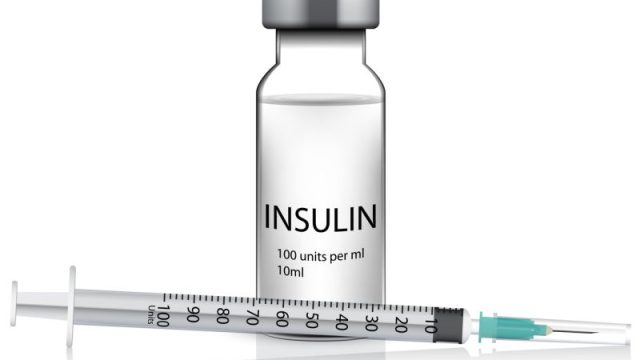
4February
2020
Latest Diabetes News By Serena GordonHealthDay Reporter TUESDAY, Feb. 4, 2020 (HealthDay News) — If you don’t need insulin, you probably haven’t paid much attention to its skyrocketing cost, but new research shows that exorbitant drug pricing eventually affects everyone. The study found that in 2017, Medicare spent nearly $8 billion on insulin. The researchers said that if Medicare were allowed to negotiate drug prices like the U.S. Department of Veterans Affairs (VA) can, Medicare could save about $4.4 billion just on insulin. “Medicare now accounts for a third of all drug spending. Legislation allowing Medicare to negotiate prices and establish a central formulary would help save taxpayers money,” said the study’s lead author, Dr. William Feldman. “We just looked at insulin, but other studies have shown other drugs would have savings as well,” Feldman added. He’s a research fellow at Brigham and Women’s Hospital and Harvard Medical School in Boston. The VA already has the ability to get discounts on drugs and to negotiate prices. It has also established a national formulary. A formulary is a list of drugs that are approved for treating certain conditions. Feldman said if a formulary only accepts a few drugs for each condition, […]

28January
2020
Latest Diabetes News By Serena GordonHealthDay Reporter MONDAY, Jan. 27, 2020 (HealthDay News) — Hundreds of black men recently discovered they could get more than a trim at their local barbershops. They were offered diabetes testing, too. A new study offered customers diabetes screenings at eight New York City barbershops. Among those who took the test, 10 percent learned they had average blood sugar levels that indicated type 2 diabetes. And almost 30% appeared to have prediabetes. Why the barbershop? “For a long time, barbershops have been a place of trust, especially for black people. Because we had the barbers on board with us, people trusted us. Barbers are often important health advocates,” said the study’s senior author, Dr. David Lee. He’s an assistant professor of emergency medicine at the NYU School of Medicine. Lee and his colleagues said it’s important to reach out to black men in this way because their diabetes diagnosis is often delayed, and black men have significantly higher rates of diabetes complications once diagnosed. Black men are also less likely to live into their 70s than are men in other racial and ethnic groups. Dr. Anthony Clarke, an internal medicine doctor in Detroit, said, “Not […]

22January
2020
1. HOMA Calculator. University of Oxford. 2. Glycemic Load Index. lowglycemicload.com<http://www.lowglycemicload.com/glycemic_table.html> 3. Ericson U., et al. “Food sources of fat may clarify the inconsistent role of dietary fat intake for incidence of type 2 diabetes.” Am J Clin Nutr. 2015 Apr 1. 4. Trapp, C,. et al. “Preparing to prescribe plant-based diets for diabetes prevention and treatment.” Diabetes Spectrum February 2012 vol. 25 no. 1 38-44. 5. Chungchunlam SM., et al. “Dietary whey protein influences plasma satiety-related hormones and plasma amino acids in normal-weight adult women.” Eur J Clin Nutr. 2015 Feb;69(2):179-86. 6. Alison B. Everet, et al. “Nutrition Therapy Recommendations for the Management of Adults with Diabetes. Diabetes Care Journal. January 2014 vol. 37 no. Supplement 1 S120-S143 7. Lasa A., et al. “Comparative effect of two Mediterranean diets versus a low-fat diet on glycaemic control in individuals with type 2 diabetes.” Eur J Clin Nutr. 2014 Jul;68(7):767-72. 8. Klonoff DC. “The beneficial effects of a Paleolithic diet on type 2 diabetes and other risk factors for cardiovascular disease.” J Diabetes Sci Technol. 2009 Nov 1;3(6):1229-32. 9. Jönsson T., et al. “Beneficial effects of a Paleolithic diet on cardiovascular risk factors in type 2 diabetes: a randomized cross-over pilot […]

2January
2020
As the incidence of diabetes continues to increase globally, the fight against this chronic condition continues. New research explains not only what triggers type 2 diabetes but also how to reverse the condition. The findings also shed light on what leads to remission after reversal for some people. Share on PinterestNew research looks at the causes of type 2 diabetes and the lifestyle changes that may reverse this condition. Between 1980 and 2014, the number of people living with diabetes across the world increased from about 108 million to 422 million. As many as 90% of these individuals have type 2 diabetes. Pharmacological interventions have done little to stop what some have referred to as the diabetes pandemic. Lifestyle interventions, however, may succeed where other approaches have failed. A couple of years ago, Medical News Todayreported on the first results of a clinical trial, which showed that intensive weight loss programs could help people with type 2 diabetes achieve remission without taking any medication. The trail was called the Diabetes Remission Clinical Trial (DiRECT), and one of its co-leaders was Prof. Roy Taylor from Newcastle University in the United Kingdom. But how does this remission occur, and can it last […]

31December
2019
Latest Diabetes News By Serena GordonHealthDay Reporter MONDAY, Dec. 30, 2019 (HealthDay News) — A new artificial pancreas system, drugs that help control blood sugar and protect the heart and the kidneys, a new medication that delays type 1 diabetes, and a new way to track blood sugar throughout the day — 2019 was a pretty big year in diabetes care. “This has been a good year for patients who have diabetes. There have been a lot of changes and there are more options. These changes will have far-reaching benefits,” explained Dr. Akankasha Goyal, an endocrinologist at NYU Langone Health in New York City. In case you missed some of the latest diabetes developments, here’s a look at some of what happened in 2019: Delaying type 1 diabetes An immunotherapy treatment called teplizumab delayed the onset of type 1 diabetes in people who were at high risk of developing the disease. The drug is also now being tested in a phase 3 trial in people who were recently diagnosed with type 1 diabetes. Another drug — anti-thymocyte globulin (ATG) — was given to people with newly diagnosed type 1 diabetes. Two-year study results were released this year. The drug helped […]

28December
2019
For those with metabolic syndrome, the necessary lifestyle and weight changes can be challenging. Now, a study has shown that eating within a certain time window can help tackle that. Share on PinterestNew research shows how intermittent fasting can help ease metabolic syndrome. Metabolic syndrome is an umbrella term for a number of risk factors for serious conditions, such as diabetes, heart disease, and stroke. These risk factors include obesity and high blood pressure, among others. This is no small issue in the United States, where one-third of adults have metabolic syndrome. In fact, the condition affects around 50% of people aged 60 and over. Obesity is also prevalent, affecting around 39.8% of adults in the U.S. Obesity is closely linked to metabolic syndrome. Receiving a diagnosis of metabolic syndrome offers a critical window of opportunity for making committed lifestyle changes before conditions such as diabetes set in. However, making the necessary long-term lifestyle changes to improve one’s health outlook is not always easy. Such changes include losing weight, managing stress, being as active as possible, and quitting smoking. For the first time, a new study has looked into time-restricted eating, or intermittent fasting, as a means of losing weight […]
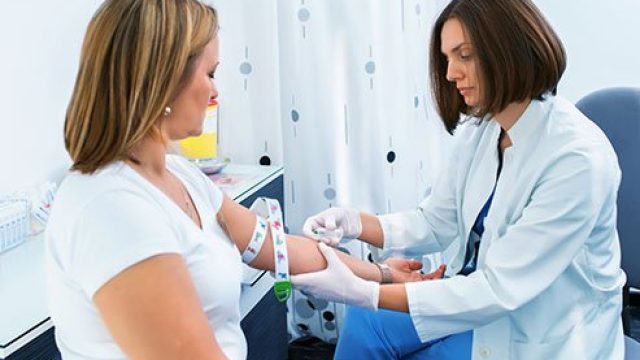
23December
2019
What is the glucose tolerance test? Picture of a Woman Is Getting a Glucose Tolerance Test Though no longer routinely used for diagnosing diabetes. The oral glucose tolerance test (OGTT) was the gold standard for making the diagnosis of type 2 diabetes. It is still commonly used during pregnancy for diagnosing gestational diabetes. With an oral glucose tolerance test, the person fasts overnight (at least 8 hours, but not more than 16 hours). The next morning, the fasting plasma glucose is tested. After this test, the person receives a dose of oral glucose (the dose depends upon the length of the test). There are several methods employed by obstetricians to do this test, but the one described here is standard. Usually, the glucose is in a sweet-tasting liquid that the person drinks. Blood samples are taken up to four times at different time points after consumption of the sugar to measure the blood glucose. How reliable is the glucose tolerance test? For the glucose tolerance test to give reliable results, the person must be in good health (not have any other illnesses, not even a common cold). Also, the person should be normally active (not lying down, for example, as […]

20December
2019
Latest Diabetes News THURSDAY, Dec. 19, 2019 (HealthDay News) — The U.S. Food and Drug Administration recently approved marketing of an interoperable automated glycemic controller device, the Tandem Diabetes Care Control-IQ Technology, the agency announced last week. The device automatically adjusts insulin delivery through connection to an alternate controller-enabled insulin pump (ACE pump) and integrated continuous glucose monitor (iCGM). According to the FDA, this controller is the first that can be used with other diabetes devices that are meant to be integrated into a diabetes management system for automated insulin delivery. With this marketing authorization, the FDA notes iCGMs and ACE pumps can be used with an interoperable automated glycemic controller as a complete automated insulin dosing (AID) system. Patients with type 1 diabetes can use the Control-IQ Technology controller with compatible iCGMs and ACE pumps to automatically increase, decrease, and suspend delivery of basal insulin based on insulin delivery history, iCGM readings, and predicted glucose values. The controller can also automatically deliver insulin when the glucose value is predicted to exceed a predefined number. Approval was based on data from a clinical trial of 168 patients with type 1 diabetes randomly assigned to use the Control-IQ Technology controller installed […]

19December
2019
Sugary drinks, packaged snacks, and ready-made meals all count as ultra-processed foods — that is, foods that contain a higher number of additives and last longer because of the added preservatives. New research suggests that these foods also raise the risk of type 2 diabetes. Share on PinterestSome packaged foods may be ultra-processed and raise the risk of type 2 diabetes, according to new research. Research has linked ultra-processed foods with conditions such as cancer, obesity, and cardiovascular disease, as well as with a higher risk of premature mortality. These foods are prevalent in Western diets, and the Western world has also seen a surge in the incidence of diabetes in recent decades. Are ultra-processed foods and type 2 diabetes linked? And if so, how? Bernard Srour, Ph.D., of the Epidemiology and Statistics Research Center–University of Paris in France, and his team of researchers set out to answer this question. They did so by examining the dietary habits of more than 100,000 people. The results of their analysis appear in the journal JAMA Internal Medicine. Ultra-processed foods and diabetes Srour and team carried out a population-based prospective cohort study in which they included 104,707 adult participants who had participated in […]

17December
2019
Latest Diabetes News By Alan MozesHealthDay Reporter MONDAY, Dec. 16, 2019 (HealthDay News) — Store-bought chicken nuggets, jelly donuts and energy bars may taste delicious. But a large, new study warns that the more of these and other highly processed foods you consume, the greater your risk for type 2 diabetes. Every 10% increase in the amount of “ultra-processed” food translated into a 15% increase in the risk for developing diabetes, according to the French study. Lead author Bernard Srour noted that his team previously established a link between higher consumption of ultra-processed food and a higher risk for cancer, heart disease, depression and premature death. Srour is a postdoctoral researcher in nutritional epidemiology at the University of Paris. So what exactly are ultra-processed foods? Srour described them as pre-packaged products subjected to a wide array of industrial manipulations. They may contain preservatives, artificial flavors, texturizing agents, food additives, sugars, nonsugar sweeteners, and coloring. Some examples, he said, include instant noodles, chicken nuggets, soft drinks, candy, margarine, pastries, breakfast cereals and energy bars. Also, flavored milk, pre-seasoned vegetables, “instant” sauces, ready-to-heat pizza, and purported “health” products like powdered or fortified meals. Such convenience foods are popular across Western developed nations, […]

16December
2019
Many people with diabetes also experience anxiety, and they may wonder whether there is a link between the two conditions. Diabetes and anxiety are both among the leading causes of disability in developed countries around the world. In the United States alone, anxiety affects close to 40 million adults. Diabetes is also common, with about 30.3 million U.S. adults living with this condition. A 2013 meta-analysis revealed that people with diabetes face a higher likelihood than the general population of experiencing anxiety. In this article, we outline the reasons for this association. We also describe the symptoms of both diabetes and anxiety, as well as how healthcare professionals diagnose each of these conditions. Share on PinterestA person’s likelihood of anxiety may increase after having several hypoglycemic episodes. People with diabetes are responsible for managing their blood sugar levels and ensuring that these stay within a healthy range. This task can be challenging and stressful. Doctors will ask people with diabetes to remain mindful of their blood sugar levels and to engage in routine behaviors, such as: paying particular attention to food ingredients avoiding certain foods tracking blood sugar levels regularly throughout the day timing insulin doses Planning, checking, and being […]
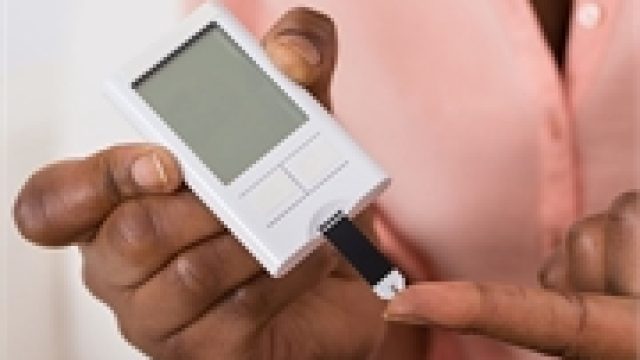
13December
2019
Latest Diabetes News By Serena GordonHealthDay Reporter THURSDAY, Dec. 12, 2019 (HealthDay News) — When you eat and how often you eat can make a big impact on your weight and insulin needs if you have type 2 diabetes, new research suggests. The study found that people who ate three meals a day instead of six smaller meals, and moved the timing of those meals to earlier in the day, needed less insulin, improved their blood sugar and lost more than 10 pounds to boot. “Shifting calories and carbs to the early hours of the day and less eating occasions is an effective strategy for the achievement of better diabetes control and outcomes with less total daily insulin dose,” said study author Dr. Daniela Jakubowicz. She is a professor of medicine from Tel Aviv University, in Israel. Jakubowicz said a traditional diet recommended for type 2 diabetes has been to eat six small meals distributed evenly throughout the day. But this type of eating plan hasn’t been effective for blood sugar control and leads to the need for more insulin, and weight gain, she said. Jakubowicz said this becomes “a vicious cycle, with continuous weight gain, increased blood sugar and […]

11December
2019
Latest Diabetes News By Serena GordonHealthDay Reporter TUESDAY, Dec. 10, 2019 (HealthDay News) — Living with diabetes — especially if you need insulin to survive — is a never-ending job that can be life-threatening if done wrong. That constant daily stress can lead to “diabetes burnout,” a new study says. Diabetics experiencing burnout are mentally and physically exhausted, feeling detached from their condition and apathetic about their need for self-care. Diabetes burnout can last hours or days, and sometimes weeks, months or even years, the researchers said. “Diabetes is unique as a disease because the self-management requires constant activity, mental energy and physical energy,” explained Felicia Hill-Briggs, immediate past president for health care and education for the American Diabetes Association. “You have to take medication, check your blood sugar, cook healthy, eat healthy, make sure you’re getting enough physical activity, and be sure to balance all those things,” said Hill-Briggs, who was not involved with the study. She likened living with diabetes to running in a marathon: Even the best-trained and most elite athletes sometimes collapse at the end of a long race, with nothing left to give. “You reach a point where you can’t do any more until you […]
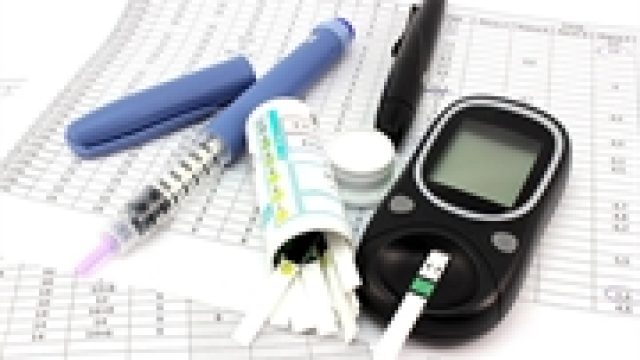
10December
2019
Latest Diabetes News By Serena GordonHealthDay Reporter MONDAY, Dec. 9, 2019 (HealthDay News) — Skyrocketing prices and insurance limits are driving many people with diabetes to seek medications and supplies from an underground supply chain, a new study found. “The cost of insulin, which is required in type 1 diabetes and a subset of type 2 diabetes, has increased substantially over the last decade. As the price of insulin rises and insurance premiums and deductibles go up, too, the situation has become untenable,” said the study’s lead author, Michelle Litchman. She is a nurse practitioner and assistant professor at the University of Utah College of Nursing, in Salt Lake City. Litchman explained that if people who need insulin ration it or stop using it, they can end up in the hospital and even risk dying. “People with diabetes want to stay healthy and because of that, they’re going to this extreme of seeking out insulin and diabetes supplies through nontraditional sources,” she added. Litchman noted that people seem to be aware that there are risks involved in getting medication and supplies from family, friends or online sources. But there’s also a risk in not taking medications like insulin, which are […]

9December
2019
Latest Diabetes News FRIDAY, Dec. 6, 2019 (HealthDay News) — Levels of possible cancer-causing chemicals in metformin diabetes medications are under investigation by the U.S. Food and Drug Administration. Metformin is a prescription drug used to control high blood sugar in patients with type 2 diabetes. Over the past year and a half, several types of drugs — including angiotensin II receptor blockers (ARBs) used for high blood pressure and ranitidine (Zantac) for heartburn — have been found to contain small amounts of genotoxic substances called nitrosamines, such as N-nitrosodimethylamine (NDMA). A genotoxic substance is something that harms the genetic material in a cell. Exposure to genotoxic substances above acceptable levels over long periods may increase the risk of cancer, the FDA said. The FDA has been investigating the presence of nitrosamines in other drug products, and some metformin diabetes medicines in other countries were reported to have low levels of NDMA, according to Dr. Janet Woodcock, director of FDA’s Center for Drug Evaluation and Research. But NDMA levels in metformin drugs abroad are within the range that naturally occurs in some foods and in water, she noted. Nonetheless, regulators in some other countries are recalling certain metformin drugs, Woodcock […]

7December
2019
Typically, doctors advise people with type 2 diabetes to eat about six times a day. But this approach can lead to a vicious cycle in which individuals require more intensive treatments. Could a different approach to diet be more suitable? Share on PinterestEating three meals a day that includes a breakfast of fruit, bread, and sweets may be more beneficial for type 2 diabetes. Type 2 diabetes is one of the most common metabolic conditions. Across the globe, over 400 million people live with it. Usually, doctors prescribe drugs that will help individuals with diabetes keep their blood sugar levels under control, as well as advise them on how to change their dietary habits to aid treatment. Many healthcare providers believe that the best approach for people with type 2 diabetes is to eat more, smaller meals at regular intervals throughout the day. Typically experts recommend eating six times a day. However, this approach can lead to problems. Some people who follow this type of diet plan require more intensive treatments. This is particularly true of those with severe forms of diabetes who need to inject themselves with high doses of insulin to counterbalance insulin resistance. However, high-dosage insulin injections […]

5December
2019
Doctors commonly prescribe metformin to help people with type 2 diabetes lower their blood sugar levels. The drug increases insulin sensitivity through its effects on glucose metabolism. Share on PinterestMetformin may hold surprising benefits in the fight against age-related illness. However, although there is clear evidence of metformin’s effectiveness, scientists do not fully understand how it interacts with cells and tissues at the molecular level. Now, a new Cell Reports study has mapped metformin activity in the liver and yielded some surprising results. Using cell cultures and mice, the researchers identified numerous biochemical switches for turning various cell and molecular processes on and off. The findings shed light not only on metformin’s mechanism of glucose control, but also on a surprising number of other reactions and pathways. The researchers suggest, for instance, that the new findings could help explain recent revelations about metformin’s apparent ability to promote healthy aging. Large-scale clinical trials of metformin are already under way to test the drug’s effectiveness in extending life span and health span — that is, the proportion of a person’s life span that they spend in good health. However, the underlying biochemistry has been unclear. Teams from three research centers worked on […]

3December
2019
Latest Diabetes News By Serena GordonHealthDay Reporter MONDAY, Dec. 2, 2019 (HealthDay News) — New government research delivers some concerning news for U.S. teens — almost 1 in 5 has prediabetes. Young adults fared even worse — 1 in 4 of those aged 19 to 34 have prediabetes, the U.S. Centers for Disease Control and Prevention report found. A person with prediabetes has higher than normal blood sugar levels. The levels aren’t yet high enough to be considered type 2 diabetes. But often, people who have prediabetes go on to develop type 2 diabetes. “Prediabetes is very prevalent among adolescents and young adults. We want people to know that this is a serious health condition that raises the risk of developing type 2 diabetes, heart disease and stroke,” said study author Linda Andes, a statistician with the CDC’s Division of Diabetes Translation. The good news? “Prediabetes can be reversed,” she said. “This can be a wake-up call to motivate people into action — eating a healthier diet, getting more physical activity and losing weight.” The researchers used data from nationally representative nutrition surveys that included almost 6,000 teens and young adults. Blood sugar levels were assessed with three different testing […]

2December
2019
Latest Diabetes News By Serena GordonHealthDay Reporter MONDAY, Dec. 2, 2019 (HealthDay News) — Christina Herrera was 44 years old when she felt the symptoms of a heart attack. “I was sweating, having heart palpitations and out of breath,” the high school teacher said. “My school nurse said, ‘I have to call an ambulance for you,’ and I said I’d go later. I had to get back to my class. She said, ‘You have to go now.’” It’s a good thing Herrera listened to her. Doctors couldn’t initially find anything wrong with her heart, but they suggested a heart catheterization. That’s a procedure where a thin tube is threaded through the blood vessels going to the heart. It allows doctors to see and sometimes treat narrowed blood vessels. In Herrera’s case, the doctors discovered three blockages. So the teacher who just wanted to go back to class ended up having triple bypass surgery. The Diabetes-Heart Disease Connection Herrera’s heart troubles didn’t come out of the blue. Her mother and father died from diabetes-related heart conditions, and her sister Jessica was only 35 when she died from diabetes-related heart complications. Herrera had been diagnosed with pre-diabetes, but not yet full-blown type […]

29November
2019
What is tolazamide? How does it work (mechanism of action)? Tolazamide is used with diet and exercise to reduce blood glucose levels in adult patients with type 2 diabetes mellitus. Other diabetes drugs are sometimes used in combination with tolazamide if needed. Tolazamides initial effect is to increase beta-cell insulin secretion. Tolazamide causes the pancreas to produce insulin and increases the body’s response to it. Tolazamide also may decrease rate of hepatic glucose production, increases insulin receptor sensitivity, and increases number of insulin receptors. There are no brand names for tolazamide. Tolazamide is available in generic form. You need a prescription to obtain tolazamide. What is tolazamide used for? Tolazamide is used with diet and exercise to reduce blood glucose levels in adult patients with type 2 diabetes mellitus. What is the dosage for tolazamide? Adults Generally, patients are started on 100 to 250 mg of tolazamide once daily with breakfast or first meal of the day. Start with 100 mg/day for fasting blood sugar <200 mg/dL or 250 mg for fasting blood sugar >200 mg/dL. Use 100 mg/day for patients who are malnourished, underweight, elderly, or those not eating properly. Dosage may be increased by 100-250 mg at weekly […]

27November
2019
How is gastroparesis diagnosed? The most common method for diagnosing gastroparesis is a nuclear medicine test called a gastric emptying study, which measures the emptying of food from the stomach. For this study, a patient eats a meal in which the solid food, liquid food, or both contain a small amount of radioactive material. A scanner (acting like a Geiger counter) is placed over the stomach for several hours to monitor the amount of radioactivity in the stomach. In patients with gastroparesis, the food takes longer than normal (usually more than several hours) to empty into the intestine. The antro-duodenal motility study is a study that can be considered experimental and is reserved for selected patients. An antro-duodenal motility study measures the pressure that is generated by the contractions of the muscles of the stomach and intestine. This study is conducted by passing a thin tube through the nose, down the esophagus, through the stomach and into the small intestine. With this tube, the strength of the contractions of the muscles of the stomach and small intestine can be measured at rest and following a meal. In most patients with gastroparesis, food (which normally causes the stomach to contract vigorously) […]

18November
2019
Latest Diabetes News MONDAY, Nov. 18, 2019 (HealthDay News) — Diabetes might be more deadly for women than men, at least when it comes to heart troubles, new research shows. Heart disease occurs an average of 15 years earlier in people with diabetes, and is their main cause of illness and death. In women, the connection between diabetes and heart disease is particularly strong. Worldwide, more women die due to diabetes than men, 2.1 million versus 1.8 million a year, the researchers said. Coronary heart disease is the most common and deadly type of heart disease in people with diabetes. Women with diabetes have a 1.8 times higher risk of death from coronary heart disease than women without diabetes. Men with diabetes have a 1.5 times higher risk of death from coronary heart disease than men without diabetes. Peripheral artery disease — which can eventually lead to foot amputation — is the most common initial sign of heart disease in type 2 diabetes patients, and it is 1.8 times more common in women than men. Heart failure is the second most common initial sign of heart disease in type 2 diabetes patients. Women with diabetes have a five times higher […]
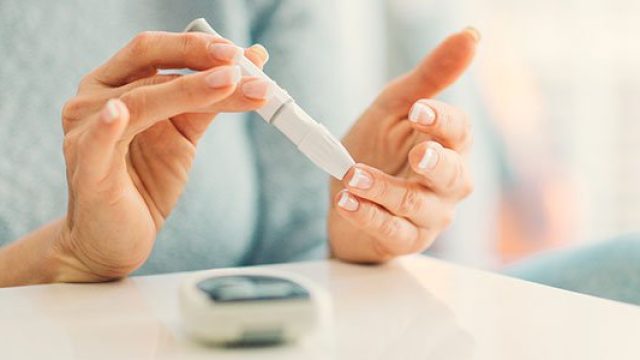
15November
2019
What is rosiglitazone, and how does it work (mechanism of action)? Rosiglitazone is an oral drug that reduces the amount of sugar (glucose) in the blood. It is used for treating patients with type 2 diabetes and is in a class of anti-diabetic drugs called thiazolidinediones. The other member of this class is pioglitazone (Actos). Insulin is a hormone produced by the pancreas that is important for controlling the levels of glucose in the blood. Insulin stimulates the cells of the body to remove glucose from the blood and thereby lowers the level of glucose in the blood. Patients with type 2 diabetes cannot make enough insulin or are resistant to the effects of insulin (insulin resistance). As a result, the cells in their bodies do not remove enough glucose from the blood, and the level of glucose rises. Rosiglitazone often is referred to as an “insulin sensitizer” because it attaches to the insulin receptors on cells throughout the body and causes the cells to become more sensitive (more responsive) to insulin and remove more glucose from the blood. At least some insulin must be produced by the pancreas in order for rosiglitazone to work. Rosiglitazone was approved by the […]
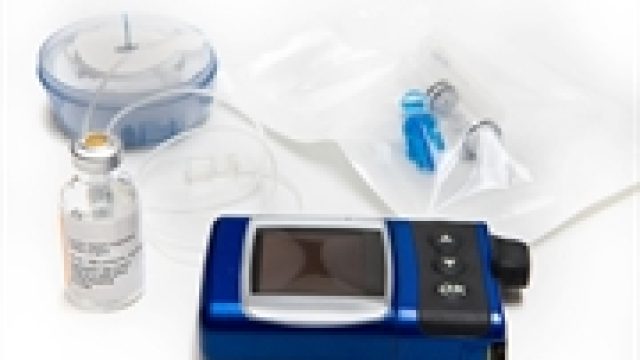
14November
2019
By Serena GordonHealthDay Reporter Latest Diabetes News THURSDAY, Nov. 14, 2019 (HealthDay News) — While the high price of insulin has gotten a lot of attention lately, it’s not the only cost issue facing people with diabetes. New technologies designed to improve blood sugar management often cost too much for people to afford. Maya Headley, 36, has had type 1 diabetes for 30 years. The New York City resident had been using an insulin pump to deliver the repeated daily insulin doses she needs to stay alive for more than 20 years. About six years ago, she just couldn’t afford to pay for the pump supplies anymore. “I was paying $300 a month for insurance and my deductible was $1,500. I had to pay 20% of the cost of my diabetes supplies after I paid the deductible, so that was another couple of hundred dollars a month,” she said. Headley added that what made affording diabetes supplies even more difficult was the uncertainty about the cost. “Insurance companies tell you they cover these devices, but not how much it will be. Until you get the bill, you don’t know. It’s hard to budget when you have no idea what your […]

13November
2019
Recent findings suggest that glucocorticoids — a class of anti-inflammatory drugs that doctors often prescribe — may increase the risk of diabetes.
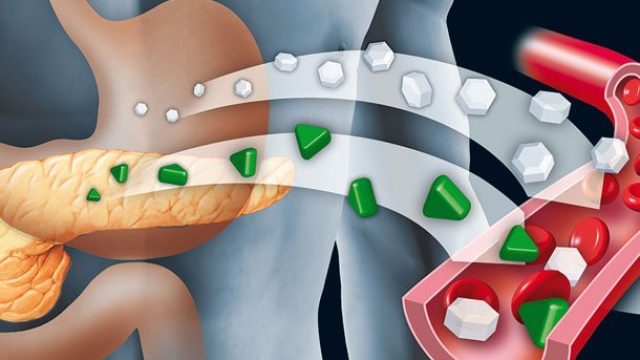
13November
2019
By Karina Lichtenstein on 11/13/2019 3:33 PM Latest Diabetes News Source: MedicineNet Health News More than 30 million people in the U.S. have diabetes, according to CDC data, but new research from Tufts University may lead to an innovative drug-free treatment. Researchers engineered pancreas beta cells that produce more than two to three times the usual level of insulin when exposed to blue light. Next, they grafted these cells into mice with diabetes. Results of the study were published in the September issue of the journal ACS Synthetic Biology. Researchers determined that the cell transplant could reduce high blood sugar, lead to better tolerance and regulation of glucose, and increase levels of insulin when exposed to blue light. Beta cells are specialized cells within the pancreas that secrete insulin, the hormone that controls blood glucose levels and allow cells to use glucose for energy, according to MedicineNet Chief Editor William C. Shiel Jr., MD, FACP, FACR. “Type 2 diabetes is a condition in which cells cannot use blood sugar (glucose) efficiently for energy,” according to Erica Oberg, ND, MPH, MD, of MedicineNet. Diabetes occurs when cells become insensitive to insulin and blood sugar becomes too high. Scientists harnessed the power […]

11November
2019
Latest Diabetes News FRIDAY, Nov. 8, 2019 (HealthDay News) — Taking vitamin D and fish oil supplements won’t prevent kidney disease in people with type 2 diabetes, a new study finds. Many diabetics use the supplements, hoping they will have a positive effect on their kidneys and heart, the researchers said. “We wanted this study to clarify whether these supplements have any real kidney benefit in adults with diabetes. Even if it’s not the result we hoped for, closing a chapter is useful for patients and clinicians and researchers alike,” said lead author Dr. Ian de Boer. He is a professor of medicine at the University of Washington School of Medicine, in Seattle. The researchers hoped the supplements would be beneficial because animal studies and lab experiments had suggested that anti-inflammatory and other properties in these supplements might prevent or slow progression of kidney disease in people with type 2 diabetes. And in humans, other research has found a link between kidney problems and low levels of vitamin D and diets lacking fish. For the study, which was part of the nationwide Vitamin D and Omega-3 Trial (VITAL), the researchers looked at kidney function in more than 1,300 people with […]

10November
2019
A fat molecule found only in avocados shows signs of strengthening insulin sensitivity, according to research in mice. Share on PinterestAvocados contain a compound that could be a secret weapon against type 2 diabetes. Avocados aren’t merely a tasty addition to a diet — they contain a fat molecule that may safely reduce insulin resistance. A study by researchers from the University of Guelph, in Canada, suggests that this compound, which avocados alone contain, may forestall or prevent the hallmark of type 2 diabetes in mice. The team also tested the safety of this compound in human participants. They have published a summary of their findings in the journal Molecular Nutrition & Food Research. The problem with type 2 diabetes Type 2 diabetes prevents the body from successfully processing glucose, or sugar, in the blood. In people without diabetes, this processing happens with the assistance of the pancreatic hormone insulin. In people who have diabetes, the body either does not produce enough of the hormone, or it cannot use it effectively. Either type of diabetes can cause too much glucose to remain in the blood, an unhealthy state that — if left unmanaged — can cause a range of serious […]
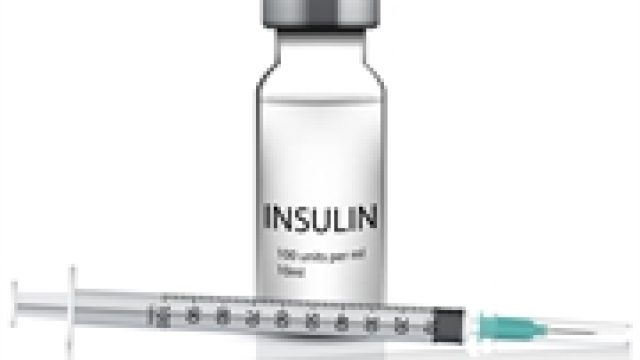
8November
2019
By Serena GordonHealthDay Reporter Latest Diabetes News WEDNESDAY, Nov. 6, 2019 (HealthDay News) — Nearly a century ago, Dr. Frederick Banting discovered lifesaving insulin, but skyrocketing prices are putting the drug out of reach for many he sought to help. The average price of insulin nearly tripled between 2002 and 2013 in the United States, according to an American Diabetes Association study. Yet other countries pay significantly less. In fact, Americans pay more than 10 times as much for insulin as Canadians do, according to a commentary published in the Nov. 7 issue of the New England Journal of Medicine. “Insulin is a flashpoint in the drug-pricing debate, and it’s still an ongoing issue. It’s a relatively unique product that will require special solutions because so many people rely on it to ensure they can live day to day,” said commentary co-author Dr. Aaron Kesselheim, a professor of medicine at Harvard Medical School. The current costs would no doubt disappoint Canadian scientist Banting. In the 1920s he and his team members sold the patent for insulin to the University of Toronto for $1 each. They felt that insulin was such an important medication that it needed to be affordable, according […]
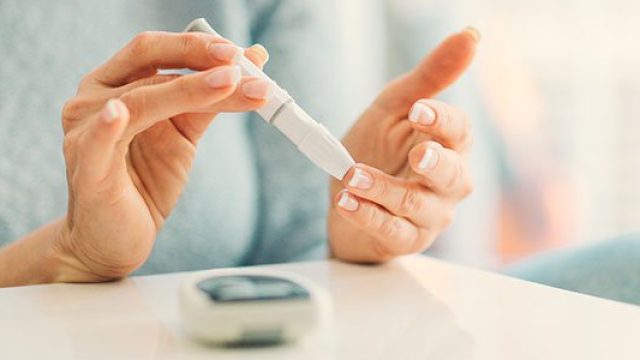
8November
2019
What is nateglinide, and how does it work (mechanism of action)? Nateglinide is an oral drug used to lower blood sugar (glucose) levels in type 2 diabetes. It is in a class of drugs called meglitinides which also includes repaglinide (Prandin). Approximately 90% of patients with diabetes have type 2 diabetes. Type 2 diabetes usually occurs in adults and is associated with obesity and a strong family history of diabetes. Insulin is an important hormone that controls the blood level of glucose. Type 2 diabetics have an inability to control blood glucose levels. This is caused by reduced secretion of insulin from the pancreas after meals and resistance of the body’s cells to the effect of insulin which is to stimulate the cells to remove glucose from the blood. This leads to high levels of blood glucose. Nateglinide stimulates cells in the pancreas to produce insulin in a manner similar to the class of drugs called sulfonylureas, for example, glyburide (Diabeta, Glynase and Micronase), which also are used in type 2 diabetes. However, nateglinide appears to have a faster onset and a shorter duration of action than sulfonylureas. The benefit of this faster, shorter effect may be to prevent the […]

7November
2019
What is acarbose, and how does it work? Acarbose is a prescription oral drug that is used to control blood glucose (sugar) levels in people type 2 diabetes in conjunction with diet, exercise, and other diabetes drugs, for example, metformin (Glucophage) or insulin. It belongs to a class of drugs called alpha-glucosidase inhibitors, which also includes miglitol (Glyset). Carbohydrates that are eaten are digested by enzymes in the intestine into smaller sugars which are absorbed into the body and increase blood sugar levels. The process of carbohydrate digestion requires the pancreas to release into the intestine alpha-amylase enzymes, which digest the large carbohydrates into smaller carbohydrates called oligosaccharides. The cells lining the small intestine then release alpha-glucosidase enzymes that further digest the oligosaccharides into smaller sugars, like glucose, that can be absorbed. Acarbose is a man-made oligosaccharide designed to slow down the actions of alpha-amylase and alpha-glucosidase enzymes, thereby slowing the appearance of sugar in the blood after a meal. What brand names are available for acarbose? Precose is the brand name available for acarbose. What are the side effects of acarbose? The most common side effects of include: There is a rare possibility that these gastrointestinal side effects may […]

6November
2019
(HealthDay News) — For people with diabetes, maintaining blood sugar may become easier with healthier snacking, says the University of Michigan Comprehensive Diabetes Center. Latest Diabetes News Snacks with 15 to 30 grams of carbs and snacks containing less than 150 calories typically are good options. For people with diabetes, the school recommends: An apple with a bit of peanut butter. Mandarin oranges and low-fat cottage cheese. Carrots and celery with hummus. Light popcorn or mini pretzels. Fruit and nut bars. Greek yogurt. Copyright © 2019 HealthDay. All rights reserved. QUESTION Diabetes is defined best as… See Answer
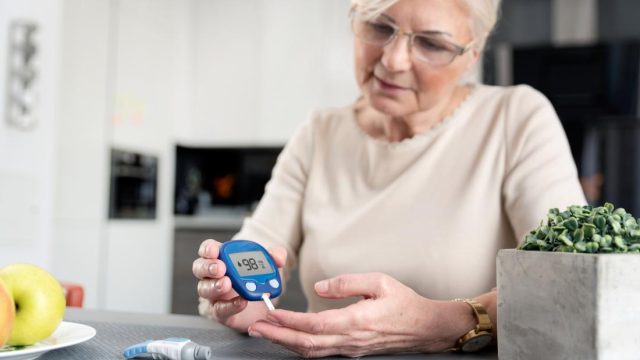
2November
2019
New research studies the association between environmental quality in over 3,000 United States counties and finds intriguing differences between rural and urban areas. Share on PinterestNew research suggests that several environmental factors are affecting the risk of type 2 diabetes. Estimates indicate that over 30 million people in the United States are currently living with type 2 diabetes, and another 84 million are living with prediabetes. Complications from diabetes are the leading cause of adult blindness, kidney failure, and amputations. Type 2 diabetes has witnessed a rapid increase in the last few years. Between 2002 and 2012, the condition increased by 4.8% each year in the U.S. When added to a genetic predisposition, diet and insufficient physical activity account for a lot of this increase. But, are these two risk factors the only environmental influences that explain the rising trend of diabetes in the U.S.? New research set out to examine if environmental factors in rural and urban areas also play a role. Dr. Jyotsna Jagai, a research assistant professor of environmental and occupational health sciences at the University of Illinois at Chicago (UIC) School of Public Health, is the first author of the new study. Dr. Jagai and the […]

28October
2019
What is diabetes? Diabetes is a set of related diseases in which the body cannot regulate the amount of sugar (specifically, glucose) in the blood. What are the types of diabetes? The related diseases of diabetes include: What are examples of insulin preparations available? Insulin preparations Examples of rapid acting insulin Apidra (insulin glulisine): Supplied in a cartridge, vial, prefilled pen (Solostar) Novolog (insulin aspart): Supplied in a cartridge, vial, prefilled pen (FlexPen) Humalog: (insulin lispro): Supplied in a cartridge, vial, prefilled pen (Kwik Pen) Examples of short acting insulin Novolin R, Humulin R (regular insulin): Supplied in a vial Velosulin (insulin with a phosphate buffer): Supplied in a pump device Examples of intermediate acting insulin Humulin N, Novolin N (NPH): Supplied in a vial, pen (Humulin N pen) Examples of long acting insulin Lantus (insulin glargine): Supplied in a vial, cartridge (OptiClick), prefilled pen (Solostar) Levemir (insulin detemir): Supplied in a vial, prefilled pen (FlexPen) Tresiba (deglutec injection): Supplied in a vial Latest Diabetes News Daily Health News Trending on MedicineNet What is the dosage and how is insulin administrated? Dosage and Administration of insulin A meal should be consumed within 30 minutes after administering regular insulin Insulin usually is administered […]

27October
2019
Type 1 diabetes has no cure, and although there are several treatment options available, many people find managing the condition challenging. New technology could help reduce that burden. Share on PinterestMany people find managing type 1 diabetes inconvenient, but new research may change this. More than 1 million children and adults in the United States have type 1 diabetes, according to the American Diabetes Association. The Centers for Disease Control and Prevention (CDC) note that about 5% of all people who have diabetes have type 1. Type 1 diabetes can significantly impact a person’s life, as people need to monitor their blood sugar levels regularly to ensure they do not become dangerously high or low. Currently, people with type 1 diabetes measure their blood sugar levels by pricking a finger several times a day or wearing a glucose monitor. Depending on the measurements, they may have to administer insulin using an injection or insulin pump. But a new form of technology trialed recently and showcased in the New England Journal of Medicine could replace these conventional methods. Automatic insulin The trial looked at a particular type of artificial pancreas, or closed-loop control. These devices continuously monitor and regulate blood glucose […]

23October
2019
By Len CanterHealthDay Reporter Latest Diabetes News WEDNESDAY, Oct. 23, 2019 (HealthDay News) — If you’ve been told that your blood glucose is higher than normal and that you have prediabetes, your doctor is likely to first suggest lifestyle steps to stop it from progressing to diabetes. The steps that can have the most benefit are losing weight and improving your diet, which obviously go hand in hand. But studies also show that different types of exercise can play an important part in diabetes prevention as well, especially if you’re overweight. Research done at the University of Michigan and published in the Journal of Applied Physiology found that, for overweight people, regular aerobic activity could interrupt the changes in metabolism that set the stage for diabetes. As you’re mapping out a fitness strategy with your doctor, talk about how to incorporate both types of exercise into your life. National guidelines are to get 150 minutes per week of aerobic activity, which could be 30 minutes on each of five days or, for beginners, three chunks of 10 minutes each on five days. Strength training could be done on the two non-aerobic activity days as long as there is a rest […]
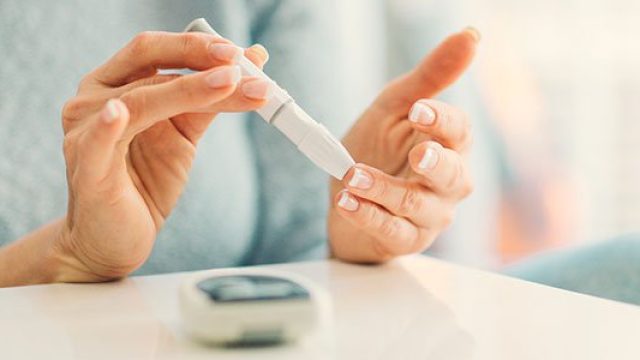
23October
2019
What is lixisenatide, and how does it work? Lixisenatide is an injectable drug that reduces the level of sugar (glucose) in the blood. It is used for the treatment type 2 diabetes and is similar to Lixisenatide belongs in a class of drugs called incretin mimetics because these drugs mimic the effects of incretins. Incretins, such as human-glucagon-like peptide-1 (GLP-1), are hormones that are produced and released into the blood by the intestine in response to food. GLP-1 increases the secretion of insulin from the pancreas, slows absorption of glucose from the gut, and reduces the action of glucagon. (Glucagon is a hormone that increases glucose production by the liver.) All three of these actions reduce levels of glucose in the blood. In addition, GLP-1 reduces appetite. Lixisenatide is a synthetic (man-made) hormone that resembles and acts like GLP-1. In studies, lixisenatide treated patients achieved lower blood glucose levels and experienced weight loss. What brand names are available for lixisenatide? Adlyxin is the brand name available for lixisenatide available in the US. Is lixisenatide available as a generic drug? No Do I need a prescription for lixisenatide? Yes What is the dosage for lixisenatide? The recommended starting dose of Adlyxin […]

21October
2019
You have chosen to share the following article: How elderberries can help you fight the flu To proceed, simply complete the form below, and a link to the article will be sent by email on your behalf.Note: Please don’t include any URLs in your comments, as they will be removed upon submission. We do not store details you enter into this form. Please see our privacy policy for more information. Message sent successfully The details of this article have been emailed on your behalf. Click here to return to the Medical News Today home page.
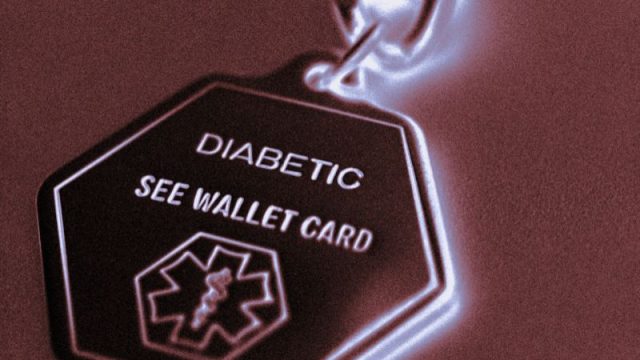
17October
2019
By Serena GordonHealthDay Reporter Latest Diabetes News WEDNESDAY, Oct. 16, 2019 (HealthDay News) — The latest version of the so-called artificial pancreas system helped people with type 1 diabetes gain even better control of their blood sugar levels than current technology does, a new study reports. The device combines an insulin pump, a continuous glucose monitor and a computer algorithm. The system measures blood sugar levels and delivers insulin automatically when levels rise. Insulin delivery is temporarily stopped if blood sugar levels drop too low. People using the artificial pancreas were able to have good blood sugar control for almost an extra three hours each day compared to using just an insulin pump and a continuous glucose monitor. “People with type 1 diabetes have to think every day about their blood sugar and how they need to manage it. Automated delivery systems can make a big difference and help ease the daily burden of managing blood sugar,” said study lead author Dr. Sue Brown, an endocrinologist and associate professor at the University of Virginia. Type 1 diabetes develops when the body’s immune system — which normally protects you from disease — mistakenly turns against the healthy cells that produce insulin. […]

16October
2019
You have chosen to share the following article: How elderberries can help you fight the flu To proceed, simply complete the form below, and a link to the article will be sent by email on your behalf.Note: Please don’t include any URLs in your comments, as they will be removed upon submission. We do not store details you enter into this form. Please see our privacy policy for more information. Message sent successfully The details of this article have been emailed on your behalf. Click here to return to the Medical News Today home page.

15October
2019
A recent study concludes that the husks and silverskin that coffee manufacturers remove during production might harbor useful compounds. Although the study is preliminary, its findings could eventually benefit both human health and the environment. The study looks to repurpose the waste that coffee production creates. Coffee is one of the world’s most popular drinks. To produce coffee, only the bean itself needs roasting. To reach the bean, growers remove the husk, which is a tough outer shell, and the silverskin, which is a thin skin that covers the seed. They tend to leave the husks, in particular, in the field. These abandoned coffee byproducts contain chemicals such as caffeine, tannins, and chlorogenic acid, which can be hazardous to the environment. Manufacturers produce around 0.68 tons of green coffee waste to generate 1 ton of fresh coffee, so it makes sense to find ways to repurpose these byproducts. Now, researchers at the University of Illinois at Urbana–Champaign are investigating whether or not some of this waste could be useful for its bioactive properties. Converting waste into medicine Using extracts of silverskin and husk, the scientists investigated whether these byproducts might reduce some of the biochemical hallmarks of obesity. They also […]
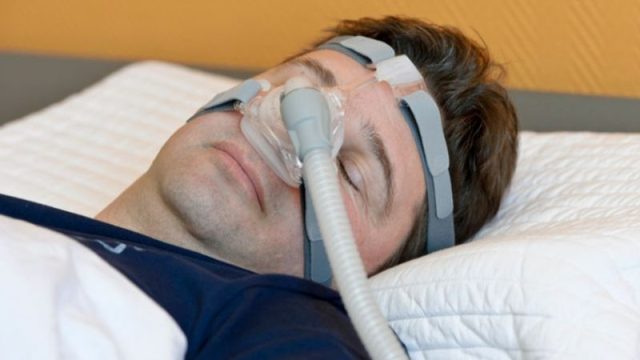
15October
2019
Latest Diabetes News TUESDAY, Oct. 15, 2019 (HealthDay News) — Severe sleep apnea is a risk factor for diabetic eye disease that can lead to vision loss and blindness, researchers report. Poor control of diabetes can result in damage to tiny blood vessels at the back of the eye, a condition called diabetic retinopathy. It’s a leading cause of blindness in the United States. In some cases, tiny bulges protrude from the blood vessels and leak fluid and blood into the retina. This fluid can cause swelling (edema) in an area of the retina that enables clear vision and is called macular edema. In this study, researchers in Taiwan examined data from 51 patients over eight years at Chang Gung Memorial Hospital in Taipei. They found that patients with diabetic macular edema had a much higher rate (80.6%) of severe sleep apnea than those without the eye condition (45.5%). The worse the sleep apnea, the more severe the macular edema, according to the study. The researchers also found that severe sleep apnea was more common patients who required more treatment to control their macular edema. These patients needed at least three medical or laser therapy treatments, according to the study. […]

11October
2019
By Serena GordonHealthDay Reporter Latest Diabetes News FRIDAY, Oct. 11, 2019 (HealthDay News) — Hurricanes can harm anyone in their path, but new research suggests that seniors with diabetes face a 40% increased risk of dying within the first month after a storm hits. It’s not just the first month they have to worry about: The study also found seniors with diabetes still had a 6% higher risk of dying even up to 10 years later. “We compared seniors with diabetes in affected areas to those who were much less affected by storms and found two big results. One is that in overall mortality, there’s a pretty big initial hit. The effect dissipated over time, but still persisted at 10 years,” said study author Troy Quast. He’s an associate professor of health economics in the University of South Florida College of Public Health. Quast said the largest difference was seen in seniors who had to relocate after a big storm. “We definitely don’t have great insight into why mortality rates were higher in this group. This is speculation, but initially, people might not have access to care or might not be able to find dialysis and have trouble reestablishing healthy […]
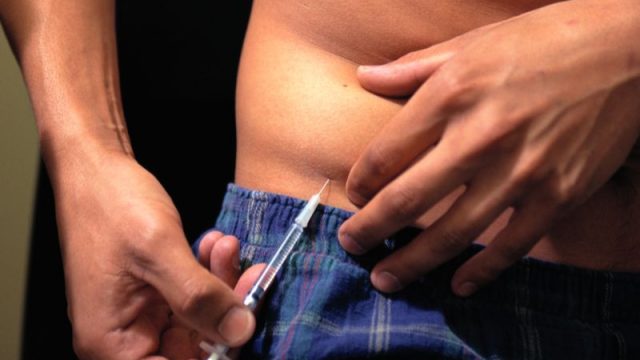
9October
2019
Latest Diabetes News TUESDAY, Oct. 8, 2019 (HealthDay News) — Many people with diabetes have to inject themselves with insulin at least once a day, but new animal research suggests a pill may one day do the trick. This experimental pill can withstand the trip through the gastrointestinal tract, scientists report. When it gets to the small intestine, it breaks down into dissolving microneedles that attach to the intestinal wall and release the drug into the bloodstream. In tests in pigs, the capsule, loaded with the same amount of insulin as an injection, was able to deliver insulin to the bloodstream as fast as an injection, researchers found. “A lot of this work is motivated by the recognition that both patients and health care providers prefer the oral route of administration over the injectable one,” said co-senior author and gastroenterologist Dr. Giovanni Traverso. He is an assistant professor in Massachusetts Institute of Technology’s Department of Mechanical Engineering. The capsule is coated with a polymer that can survive the highly acidic environment of the stomach but breaks open in the even more acidic small intestine. Three folded arms in the capsule spring open. Each arm has tiny microneedles filled with insulin. […]

9October
2019
By Serena GordonHealthDay Reporter Latest Diabetes News WEDNESDAY, Oct. 9, 2019 (HealthDay News) — The health of people with type 2 diabetes often improves dramatically with a 5% to 10% weight loss — but to sustain the benefits, you need to keep the weight off, new research claims. After losing weight with a yearlong intervention, blood sugar and blood pressure levels go down and cholesterol results improve. People who kept at least 75% of that weight off for another three years retained or had even greater health benefits, the study reported. “A lot of times, the emphasis is put on weight-loss programs, but it’s just as critical to help people maintain their weight loss,” said study senior author Alice Lichtenstein. She’s director of the Cardiovascular Nutrition Laboratory at Tufts University’s Jean Mayer USDA Human Nutrition Research Center on Aging in Boston. “People tend to think of diets as short-term, but it’s really something that has to be lifelong. If you’ve found a successful way to lose weight, don’t revert to old habits. Figure out how to incorporate the changes you made to lose weight,” Lichtenstein suggested. Excess weight is a major risk factor for developing type 2 diabetes. Studies have […]

7October
2019
Latest Diabetes News FRIDAY, Oct. 4, 2019 (HealthDay News) — A fiber-rich diet appears to help people with high blood pressure and type 2 diabetes in multiple ways, lowering their blood pressure, cholesterol and blood sugar levels, a new study suggests. High blood pressure (hypertension) and diabetes raise the risk for heart disease, and diet may help keep it at bay, researchers say. “This study helps us determine three important things for this patient population,” said lead author Dr. Rohit Kapoor, medical director of Care Well Heart and Super Specialty Hospital in Amritsar, India. “Firstly, a high-fiber diet is important in cases of diabetes and hypertension to prevent future cardiovascular disease,” Kapoor said in a news release from the American College of Cardiology. “Secondly, medical nutrition therapy and regular counseling sessions also hold great importance in treating and prevention of diabetes and hypertension,” he added. Thirdly, this type of diet in combination with medical treatment can improve lipid levels, pulse wave velocity [a measure of arterial stiffness], waist-to-hip ratio and high blood pressure, Kapoor said. For the study, Kapoor’s team tracked fiber consumption among 200 participants over six months. Patients sent photos of their meals on WhatsApp and engaged in […]

4October
2019
While researchers already knew that drinks with added sugar could increase a person’s risk of type 2 diabetes, a new study suggests that the same may be true for naturally sweet drinks, such as 100% fruit juices, as well as artificially sweetened beverages, such as “diet” soft drinks. A new study suggests that even 100% natural fruit juices may increase the risk of diabetes. Research has shown that drinking soft drinks with added sugar can increase a person’s risk of developing type 2 diabetes by affecting subtle metabolic mechanisms. But are “diet” soda and 100% fruit juices that contain a natural level of fructose but no added sugar any healthier? The evidence surrounding diet soda and its effect on diabetes risk has been conflicting. Some studies suggest that it might have an impact, while others report that there is no association between the two. Most people believe that naturally sweet drinks are healthful. However, recent research has shown that they are not nearly as good for us as we think. One study that we covered on Medical News Today in July this year, for instance, indicated that they could increase a person’s risk of cancer. Now, research from an international […]

4October
2019
By Serena GordonHealthDay Reporter Latest Diabetes News FRIDAY, Oct. 4, 2019 (HealthDay News) — British researchers have good news for people with type 2 diabetes — you don’t need to lose a ton of weight to make a difference in your health. In fact, they found that losing just 10% of your body weight during the first five years you have the disease can lead to remission of type 2 diabetes. That weight loss would be 18 pounds for someone who weighs 180 pounds. It doesn’t matter what diet helps you lose the weight. And it doesn’t matter how slow or how quickly those pounds come off, the investigators found. “Even small amounts of weight loss can help you achieve remission. Extreme dieting and exercising are not necessary,” said study author Dr. Hajira Dambha-Miller, a general practice physician and clinical lecturer at the University of Cambridge School of Clinical Medicine, in the United Kingdom. “Type 2 diabetes should no longer be seen as a lifelong disease,” she added. The disease can essentially be cured if you lose weight and keep it off, according to Dambha-Miller. The researchers said that type 2 diabetes affects 400 million people around the world. It’s […]

3October
2019
A new study analyzing the data of more than 1,600 adults found that people with hypertension or type 2 diabetes had a higher risk of death from stroke or heart disease if they slept for less than 6 hours per night. Sleeping for less than 6 hours each night could put people with diabetes or hypertension at a higher risk of premature death. Type 2 diabetes and hypertension (high blood pressure) are two very common health conditions around the world. While there are tried and true ways of managing them, these conditions can increase a person’s risk of developing heart disease and experiencing a stroke. Recently, a study that featured in the Journal of the American Heart Association found that one factor — sleep — may play a significant role for people with these health conditions. “Our study suggests that achieving normal sleep may be protective for some people with these health conditions and risks,” says lead author Julio Fernandez-Mendoza, Ph.D., from the Pennsylvania State College of Medicine in Hershey. “However,” he cautions, “further research is needed to examine whether improving and increasing sleep through medical or behavioral therapies can reduce risk of early death.” Is short sleep duration ‘a […]

30September
2019
A new study has found that if people achieve moderate weight loss within the first few years of a type 2 diabetes diagnosis, they could actually send the condition into remission. Could ‘modest’ weight loss send type 2 diabetes into remission? A new study suggests that the answer is ‘yes.’ Type 2 diabetes is a metabolic condition characterized by the body’s inability to sufficiently process glucose (sugar). As a result, blood sugar levels are persistently high. This condition affects over 30 million people in the United States and, if unchecked, it can lead to various complications, including hyperglycemia, hypertension, and vision problems. Usually, doctors prescribe medication and suggest dietary interventions to help individuals keep the symptoms of type 2 diabetes under control. Yet remission — referring to a drastic decrease or even disappearance of symptoms, allowing people to cease treatment — is possible under certain conditions. Individuals with both obesity and type 2 diabetes, for instance, can experience remission of diabetes following bariatric (weight loss) surgery. Previously, in 2016, a different study showed that people with diabetes who followed an intensive low calorie diet — amounting to an intake of 624–700 kilocalories per day for a period of 8 weeks […]
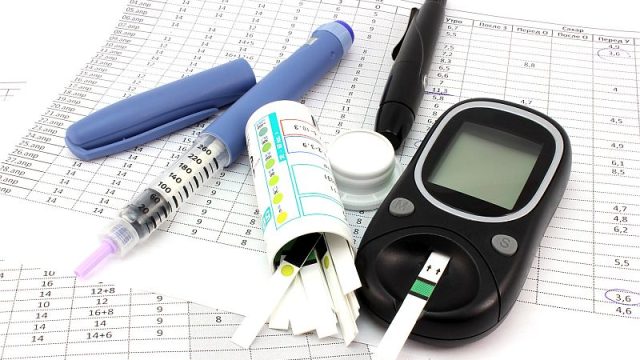
30September
2019
Latest Diabetes News FRIDAY, Sept. 27, 2019 (HealthDay News) — Under the Affordable Care Act (ACA), nearly 2 million diabetics, many of them poor, got health insurance, a new study shows. “Insurance coverage can change the health trajectory of people with diabetes by providing access to diagnosis and treatment,” said lead researcher Rebecca Myerson. She is an assistant professor of population health sciences at University of Wisconsin School of Medicine and Public Health. “But just as importantly, increasing coverage rates can also enhance health equity, because people with undiagnosed or untreated diabetes disproportionately belong to underserved groups,” Myerson added in a university news release. Before the ACA, also mown as Obamacare, 17% of adults under 65 with diabetes had no health insurance, the study found. After the health care reform law was passed in 2010, the number of uninsured diabetics dropped 12 percentage points. Among those with low incomes, the drop was 27 percentage points, the researchers noted. Among those with undiagnosed diabetes, 1 in 4 adults under age 65 had no insurance before the ACA. After the ACA, the rate of the uninsured in this group dropped 17 percentage points, to 8%. For the study, researchers used data from […]
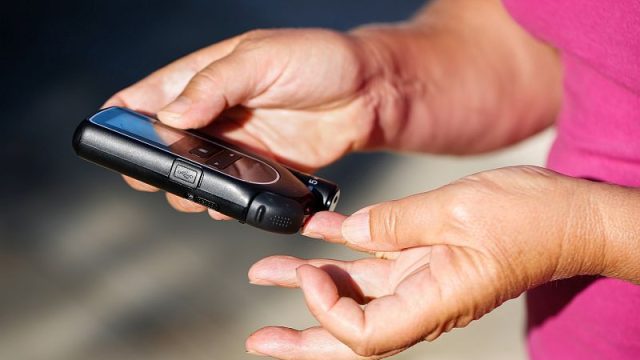
25September
2019
By Serena GordonHealthDay Reporter Latest Diabetes News WEDNESDAY, Sept. 25, 2019 (HealthDay News) — Are elderly people with diabetes being overtreated? A new study suggests that’s so: Older, sicker patients tend to be the ones most likely to still be using insulin to manage their blood sugar, despite guidelines that suggest it’s often safer to lower diabetes treatment intensity with age. The study found that nearly 20% of people with type 2 diabetes older than 75 were still using insulin treatment. And almost 30% of people with diabetes over 75 in poor health were taking insulin. One of the most significant side effects of insulin is low blood sugar (hypoglycemia). This can leave you feeling shaky, sweaty, irritable, confused and dizzy. It can also cause an irregular heartbeat, and may lead to fainting. At its most serious, hypoglycemia can cause death, though this happens rarely, according to the American Diabetes Association. Major health organizations — including the American Diabetes Association, the U.S. Department of Veterans Affairs and the American Geriatrics Society — recommend that healthy older patients can maintain tighter blood sugar control. But for patients in poor health, with shorter life expectancies, these groups suggest less aggressive lowering of […]

23September
2019
What is glucose? What is glucose used for? Glucose also known as dextrose is a simple sugar (monosaccharide) that is used to increase the level of blood sugar (glucose) when the level falls too low (hypoglycemia). Glucose in this form increases the level of the blood sugar, so it is a glucose-elevating agent. Other glucose-elevating agents are diazoxide (Proglycem) and glucagon. Glucose is the primary fuel used by most cells in the body to generate the energy that is needed to carry out cellular functions. When glucose levels fall to hypoglycemic levels, cells cannot function normally, and symptoms develop such as nervousness, cool skin, headache, confusion, convulsions, or coma. Ingested glucose is absorbed directly into the blood from the intestine and results in a rapid increase in the blood glucose level. What brand names are available for glucose? Insta-Glucose, Dex4, Glutose, Insulin Reaction, BD Glucose and many others Do I need a prescription for glucose? no What are the side effects of glucose? Nausea may occur after ingesting glucose, but this also may be an effect of the hypoglycemia which is present just prior to ingestion. Other adverse effects include: increased blood glucose, injection site leakage of fluid (extravasation), injection site […]
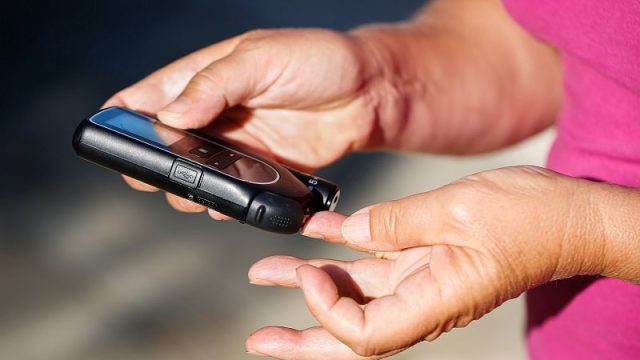
23September
2019
Latest Diabetes News FRIDAY, Sept. 20, 2019 (HealthDay News) — A new pill to lower blood sugar for people with type 2 diabetes was approved by the U.S. Food and Drug Administration on Friday. The drug, Rybelsus (semaglutide) is the first pill in a class of drugs called glucagon-like peptide (GLP-1) approved for use in the United States. Before Rybelsus, the drug had to be injected. “Before this approval, patients did not have an oral GLP-1 option to treat their type 2 diabetes, and now patients will have a new option for treating type 2 diabetes without injections,” said Dr. Lisa Yanoff in an agency news release. She is acting director of the Division of Metabolism and Endocrinology Products in the FDA’s Center for Drug Evaluation and Research. GLP-1 is a hormone often found in low levels in people with type 2 diabetes. Rybelsus acts by slowing digestion and preventing the liver from making too much sugar, which helps the pancreas produce more insulin. In clinical trials, Rybelsus significantly lowered blood sugar. After 26 weeks, 77% of patients taking 14 mg of Rybelsus daily saw their HbA1C drop below 7% compared with 31% among those receiving a placebo. HbA1C is […]

20September
2019
Latest Diabetes News THURSDAY, Sept. 19, 2019 (American Heart Association News) — Eating patterns similar to the Mediterranean diet and the blood pressure-lowering DASH may help older women with Type 2 diabetes ward off heart attacks, strokes and related problems, new research suggests. Diabetes afflicts one-quarter of Americans 65 and older. An estimated 68% of these patients will die of heart disease, and 16% will die of stroke. The new study focused on data from the Women’s Health Initiative, a massive long-term project exploring disease prevention in postmenopausal women. It included more than 5,800 women who developed diabetes as adults but reported no cardiovascular disease at the project’s outset. The researchers scored detailed food questionnaires from the women according to how closely their responses fit each of four dietary patterns. Three patterns – an “alternate” Mediterranean diet, adapted for Western tastes; the Dietary Approach to Stop Hypertension, or DASH; and American Diabetes Association recommendations – all advocate eating more fruit, vegetables, nuts and seeds, legumes, whole grains and some dairy, and less added sugars and red and processed meat. The fourth pattern, a Paleolithic-style diet, emphasizes meat, fruit, nuts, greens and other vegetables, and discourages consumption of grains, dairy, added […]
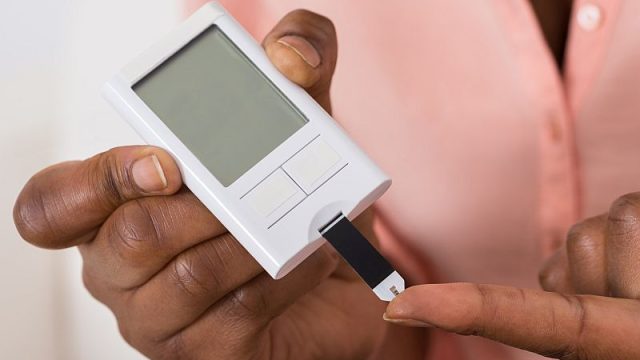
20September
2019
By Serena GordonHealthDay Reporter Latest Diabetes News THURSDAY, Sept. 19, 2019 (HealthDay News) — If you have type 2 diabetes, keeping your blood sugar levels stable over time may be key to living longer. New research finds that people who have more swings in their blood sugar levels were more than twice as likely to die early, compared to folks with more stable blood sugar management. The study authors used a test called hemoglobin A1C to measure blood sugar. This commonly used test provides a rough estimate of about two to three months of average blood sugar levels. Although treatment decisions are usually individualized based on age and other factors, most people with diabetes generally aim for an A1C of 7% or lower. Higher numbers may indicate the need to change medications or lifestyle factors. “In addition to reaching the hemoglobin A1C goal, fluctuation of hemoglobin A1C level is also associated with adverse events of diabetes,” said study author Dr. Sheyu Li, an endocrinologist from West China Hospital at Sichuan University in Chengdu, China. A number of factors can affect A1C levels, including how well the body’s insulin-producing cells work, body weight, lifestyle management, other illnesses and diabetes medications, according […]

19September
2019
(HealthDay News) — Reactive hypoglycemia refers to low blood sugar after a meal, says Mayo Clinic. The condition has a variety of causes, from drinking alcohol to metabolic disorders. Latest Diabetes News People with reactive hypoglycemia may have symptoms including weakness, shakiness and lightheadedness. To manage reactive hypoglycemia, Mayo Clinic suggests: Eating a balanced diet with lean meat, fiber, whole grains, fruits and vegetables. Avoiding sugary foods and processed simple carbohydrates. Eating food if drinking alcohol. Eating several small meals and snacks throughout the day. Copyright © 2019 HealthDay. All rights reserved. SLIDESHOW Type 2 Diabetes Diagnosis, Treatment, Medication See Slideshow

18September
2019
By Serena GordonHealthDay Reporter Latest Diabetes News TUESDAY, Sept. 17, 2019 (HealthDay News) — Chinese researchers may deserve a toast for their new findings that suggest light to moderate drinking may be beneficial for people with type 2 diabetes. The review found that people who had a bit of alcohol daily had lower levels of a type of blood fat called triglycerides. But alcohol didn’t seem to lower blood sugar levels in people who already had type 2 diabetes, the review found. The research did show lower levels of insulin and improved insulin resistance in people who drank light to moderate amounts of alcohol, study lead author Yuling Chen said. Chen is a medical student at Southeast University in Nanjing, China. That finding suggests that “light to moderate alcohol consumption might protect against type 2 diabetes,” Chen said. But Chen cautioned that you can have too much of a good thing: “High alcohol consumption is reported to be a risk factor for diabetes.” The authors said light to moderate drinking is about 20 grams of alcohol daily. That’s about 1.5 cans of beer, a large glass of wine (almost 7 ounces), or a generous shot (1.7 ounces) of distilled spirits. […]
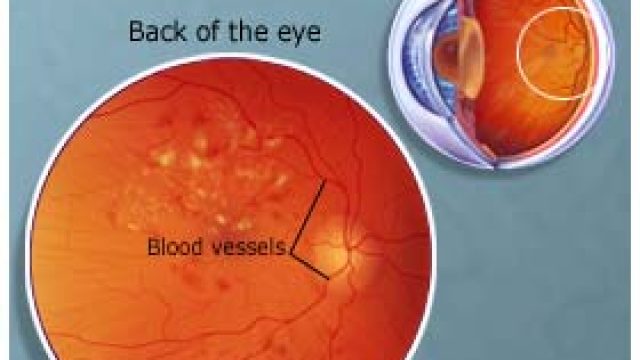
18September
2019
Diabetic Retinopathy Picture of Diabetic Retinopathy of the Eye The retina is a group of specialized cells that convert light as it enters though the lens into images. The eye nerve or optic nerve transmits visual information to the brain. Diabetic retinopathy is one of the vascular (blood-vessel related) complications related to diabetes. This diabetes eye problem is due to damage of small vessels and is called a “microvascular complication.” Kidney disease and nerve damage due to diabetes are also microvascular complications. Large blood vessel damage (also called macrovascular complications) includes complications like heart disease and stroke. The microvascular complications have, in numerous studies, been shown to be related to high blood sugar levels. You can reduce your risk of these eye problems in diabetes complications by improving your blood sugar control. Diabetic retinopathy is the leading cause of irreversible blindness in industrialized nations. The duration of diabetes is the single most important risk for developing retinopathy. So the longer you have diabetes, the greater the risk of this very serious eye problem. If retinopathy is not found early or is not treated, it can lead to blindness. People with type 1 diabetes rarely develop retinopathy before puberty. In adults […]

17September
2019
You have chosen to share the following article: How elderberries can help you fight the flu To proceed, simply complete the form below, and a link to the article will be sent by email on your behalf.Note: Please don’t include any URLs in your comments, as they will be removed upon submission. We do not store details you enter into this form. Please see our privacy policy for more information. Message sent successfully The details of this article have been emailed on your behalf. Click here to return to the Medical News Today home page.
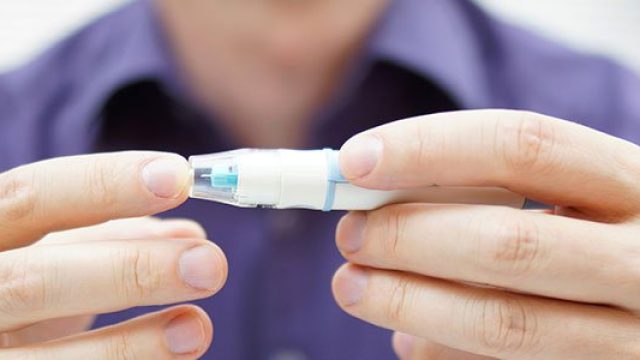
16September
2019
Diabetic ketoacidosis facts Diabetic ketoacidosis is a life-threatening complication of type 1 diabetes (though rare, it can occur in people with type 2 diabetes) that occurs when the body produces high levels of ketones due to lack of insulin. Diabetic ketoacidosis occurs when the body cannot produce enough insulin. The signs and symptoms of diabetic ketoacidosis include Risk factors for diabetic ketoacidosis are type 1 diabetes, and missing insulin doses frequently, or being exposed to a stressor requiring higher insulin doses (infection, etc). Diabetic ketoacidosis is diagnosed by an elevated blood sugar (glucose) level, elevated blood ketones and acidity of the blood (acidosis). The treatment for diabetic ketoacidosis is insulin, fluids and electrolyte therapy. Diabetic ketoacidosis can be prevented by taking insulin as prescribed and monitoring glucose and ketone levels. The prognosis for a person with diabetic ketoacidosis depends on the severity of the disease and the other underlying medical conditions. Type 1 Diabetes Symptoms and Signs Type 1 diabetes can be subtle or life threatening. Some people have no symptoms (asymptomatic), and type 1 diabetes is not detected until blood or urine lab studies are done. If a person does have type 1 diabetes symptoms, early signs and symptoms […]
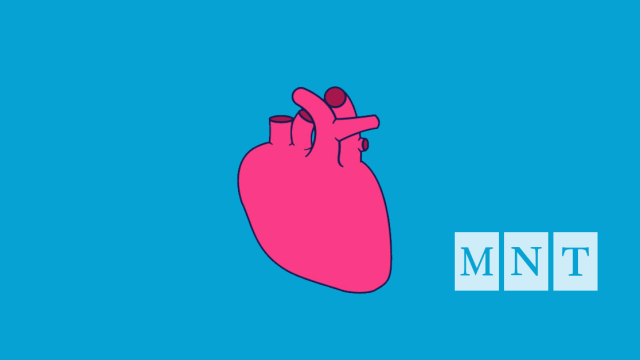
13September
2019
FDA warning: Thyroid cancer This drug has a boxed warning. This is the most serious warning from the Food and Drug Administration (FDA). A boxed warning alerts doctors and patients about drug effects that may be dangerous. In animals, Ozempic can increase the risk of thyroid tumors. It’s not known if Ozempic has this effect in humans. You should not use Ozempic if you or an immediate family member has had thyroid cancer in the past, or if you have a rare form of cancer called multiple endocrine neoplasia syndrome type 2. If you’re taking Ozempic and have symptoms of a thyroid tumor, contact your doctor right away. Symptoms can include a mass or lump in your neck, trouble swallowing or breathing, and a hoarse voice. What is Ozempic? Ozempic is a brand-name prescription medication that’s used to improve blood sugar levels in adults with type 2 diabetes. It comes as a liquid solution that’s given by injection under the skin (subcutaneous). Ozempic contains the drug semaglutide, which belongs to a class of drugs called glucagon-like peptide-1 (GLP-1) agonists. Ozempic can be used alone or in combination with other diabetes medications. In a clinical study, when used alone, Ozempic reduced […]
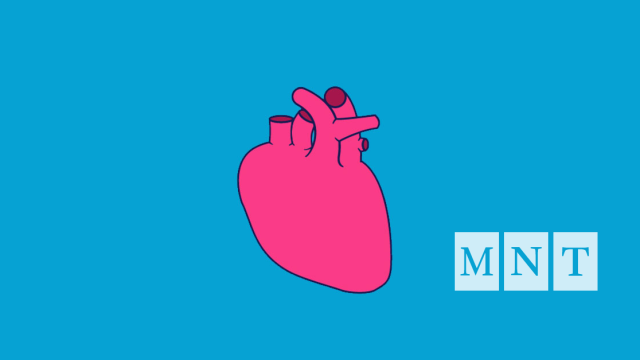
13September
2019
FDA warning: Thyroid cancer This drug has a boxed warning. This is the most serious warning from the Food and Drug Administration (FDA). A boxed warning alerts doctors and patients about drug effects that may be dangerous. In animals, Bydureon can increase the risk of thyroid tumors and thyroid cancer. It’s not known if Bydureon has this effect in humans. You shouldn’t use Bydureon if you or an immediate family member has had thyroid cancer in the past, or if you have a rare form of cancer called multiple endocrine neoplasia syndrome type 2. If you’re taking Bydureon and have symptoms of a thyroid tumor, contact your doctor right away. Symptoms can include: a mass or lump in your neck trouble swallowing trouble breathing a hoarse voice What is Bydureon? Bydureon is a brand-name medication that’s used to improve blood sugar levels in people with type 2 diabetes. It comes as a liquid suspension that’s given by injection under the skin (subcutaneous). Bydureon is available in two forms: a syringe and a pen injector. Bydureon contains a drug called extended-release exenatide. It belongs to a class of drugs called glucagon-like peptide-1 (GLP-1) agonists. Bydureon vs. Bydureon BCise Bydureon BCise is […]
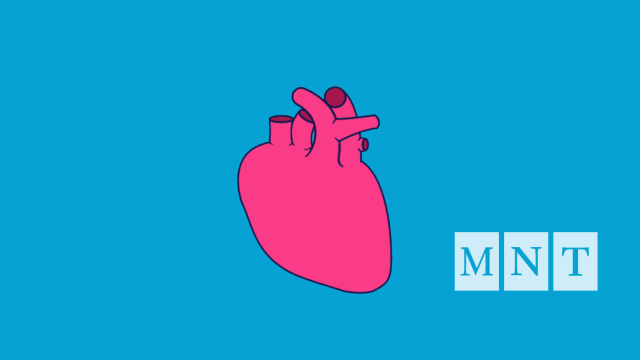
13September
2019
What is Farxiga? Farxiga is a brand-name prescription medication that contains the drug dapagliflozin. Farxiga is used to improve blood sugar levels in adults with type 2 diabetes. It comes as a tablet you take by mouth. Farxiga belongs to a class of medications called sodium-glucose co-transporter 2 (SGLT2) inhibitors. In clinical studies, Farxiga decreased fasting blood sugar levels by 28.8 mg/dL and hemoglobin A1c (HbA1c) by 0.9 percent after 24 weeks of treatment. About 44 to 51 percent of people in the studies who took Farxiga for 24 weeks reached their goal HbA1c of less than 7 percent. Farxiga can be used by itself or along with other diabetes medications. Farxiga generic Farxiga is only available as a brand-name drug. It contains the drug dapagliflozin, which isn’t currently available in generic form. Farxiga side effects Farxiga can cause mild or serious side effects. The following list contains some of the key side effects that may occur while taking Farxiga. This list doesn’t include all possible side effects. For more information on the possible side effects of Farxiga, or tips on how to deal with a troubling side effect, talk with your doctor or pharmacist. More common side effects The […]
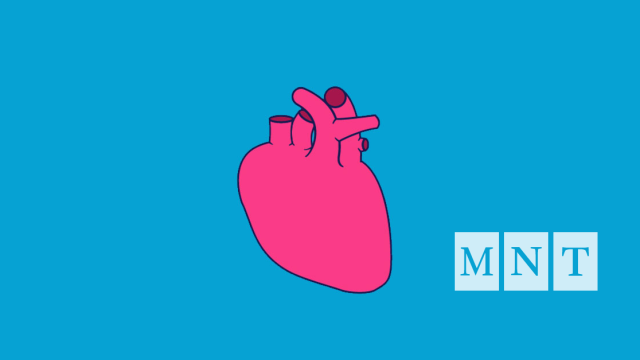
13September
2019
What is Soliqua 100/33? Soliqua 100/33 is a brand-name prescription medication. It’s used with diet and exercise to improve blood sugar levels in adults with type 2 diabetes. Soliqua 100/33 contains two drugs: insulin glargine, which is a long-acting insulin lixisenatide, which belongs to class of drugs called glucagon-like peptide 1 (GLP-1) receptor agonists Soliqua 100/33 comes as an injectable pen that’s used for self-injection under the skin (subcutaneous). Each pen contains 3 mL of drug solution, with 100 units of insulin glargine and 33 mcg of lixisenatide per mL of solution. The pens are used with pen needles, which aren’t included with the pens. Effectiveness Soliqua 100/33 has been found effective in treating type 2 diabetes. In one clinical study, Soliqua 100/33 was tested in people with type 2 diabetes who had been treated with long-acting insulins for at least six months. After 30 weeks of treatment with Soliqua 100/33, these people had reduced hemoglobin A1c (HbA1c) by 1.1 percent. They also had reduced fasting blood sugar levels by 5.7 mg/dL. In another clinical study, Soliqua 100/33 was used with metformin for 30 weeks. The study involved people who had previously been treated with metformin alone, or with metformin […]
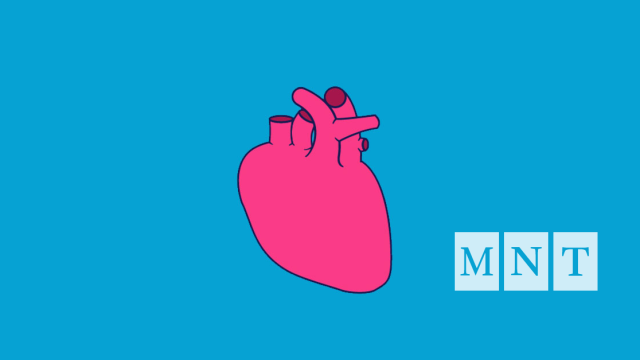
13September
2019
FDA warning: Risk of lower limb amputation This drug has a boxed warning. This is the most serious warning from the Food and Drug Administration (FDA). A boxed warning alerts doctors and patients about drug effects that may be dangerous. Some people taking Invokana may have an increased risk for the amputation of a lower limb. This includes people with type 2 diabetes and heart disease, or those who are at risk for heart disease. Before you start taking Invokana, talk with your doctor about the possible risks. This is especially important if you’ve had an amputation in the past. It’s also important if you have a blood circulation or nerve disorder, or diabetic foot ulcers. What is Invokana? Invokana is a brand-name prescription medication. It’s used to improve blood sugar levels in adults with type 2 diabetes. Doctors prescribe Invokana in addition to diet and exercise. Invokana contains the drug canagliflozin. This medication belongs to a class of drugs called sodium-glucose co-transporter 2 (SGLT-2) inhibitors. Study results have shown that Invokana reduced the risk of heart attack, stroke, and death in adults with type 2 diabetes and heart disease by 14 percent. Invokana comes as a tablet you take […]

11September
2019
You have chosen to share the following article: How elderberries can help you fight the flu To proceed, simply complete the form below, and a link to the article will be sent by email on your behalf.Note: Please don’t include any URLs in your comments, as they will be removed upon submission. We do not store details you enter into this form. Please see our privacy policy for more information. Message sent successfully The details of this article have been emailed on your behalf. Click here to return to the Medical News Today home page.

11September
2019
Researchers already know that excess body fat can increase the risk of diabetes, but a new study shows that one form of fat, in particular — the “invisible” one that accumulates around organs and intestines — can heighten this risk more than seven times, at least in women. The fat that accumulates around the organs is a hidden risk factor for diabetes, especially in women. Though excess body fat is a known risk for many metabolic conditions, including type 2 diabetes, recent research has been gathering evidence to show that the amount of body fat is not the only factor that contributes to risk. A study that Medical News Today covered last year explained that doctors might do well to assess where fat accumulates around the body, and not just how much there is, to understand a person’s risk of diabetes. Now, research from Uppsala University in Sweden has found that the fat that accumulates around the organs and intestines — called visceral fat — is a crucial factor that raises the risk of type 2 diabetes, particularly in women. The team — co-led by Torgny Karlsson, Ph.D. — studied the data of 325,153 individuals, which they accessed through the […]

10September
2019
By Serena GordonHealthDay Reporter Latest Diabetes News MONDAY, Sept. 9, 2019 (HealthDay News) — Being shorter than average can bring numerous annoyances, but a new study suggests it might also heighten a person’s odds for type 2 diabetes. The German study found that each additional 10 centimeters (about 4 inches) of height was linked to a 41% lower risk of type 2 diabetes in men and a 33% lower risk in women. “We found that larger body height was related to lower diabetes risk,” said study author Matthias Schulze, a professor at the University of Potsdam and department head at the German Institute of Human Nutrition Potsdam-Rehbruecke in Nuthetal. How might your height make a difference in your risk of diabetes? According to the researchers, it could be that shorter people may gain liver fat more easily, as well as more heart disease and metabolic risk factors such as higher blood pressure, cholesterol and inflammation. However, the study didn’t prove a definitive cause-and-effect link, only an association, the researchers were quick to note. Schulze said height alone probably doesn’t cause the “insulin resistance” that then can lead to type 2 diabetes. Instead, he believes, other factors involved in growth may […]

9September
2019
You have chosen to share the following article: How elderberries can help you fight the flu To proceed, simply complete the form below, and a link to the article will be sent by email on your behalf.Note: Please don’t include any URLs in your comments, as they will be removed upon submission. We do not store details you enter into this form. Please see our privacy policy for more information. Message sent successfully The details of this article have been emailed on your behalf. Click here to return to the Medical News Today home page.

9September
2019
Providing people with a safe way to manage their own care could be an effective solution to the healthcare burden of long term conditions. According to researchers in China, this could come in the form of text messages. Motivational text messages could help people living with diabetes better manage their condition. Researchers have found that a series of simple motivational texts can improve blood sugar control in people with diabetes and coronary heart disease. Not only is this an affordable and scalable solution, it is also one that researchers can apply to almost any population across the globe. The researchers chose people with diabetes and cardiovascular disease for the trial because they need to pay particular attention to their bodies. Over time, high blood sugar levels can lead to a number of serious complications, including kidney disease, heart disease, and stroke. Cardiovascular disease is the leading cause of death worldwide, according to the World Health Organization (WHO). Managing these conditions can often require sticking to several lifestyle recommendations, so researchers studied whether texts could help. In the past, trials of text based systems were limited for failing to take into account the fact that some people may have more than […]
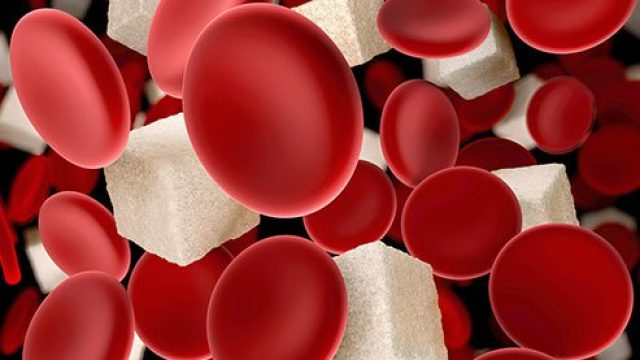
9September
2019
Low blood sugar (hypoglycemia) Low blood sugar occurs when there is not enough sugar in the blood. What is low blood sugar? Hypoglycemia or low blood sugar is syndrome that results from low blood sugar. The severity and symptoms of hypoglycemia can vary from person to person. Blood tests can diagnose low blood sugar, and symptoms resolve when the levels of sugar in the blood return to the normal range. The medical term for blood sugar is blood glucose. Latest Diabetes News Daily Health News Trending on MedicineNet What are the symptoms and signs that your blood sugar is too low? The normal range of glucose in the bloodstream is from 70 to 100 mg/dL when the individual is fasting (that is not immediately after a meal). The body’s biochemical response to hypoglycemia usually starts when sugars are in the high/mid 70’s. At this point, the liver releases its stores and the hormones mentioned above start to activate. In many people, this process occurs without any clinical symptoms. The amount of insulin produced also declines in an attempt to prevent a further drop in glucose. While there is some degree of variability among people, most will usually develop symptoms suggestive […]
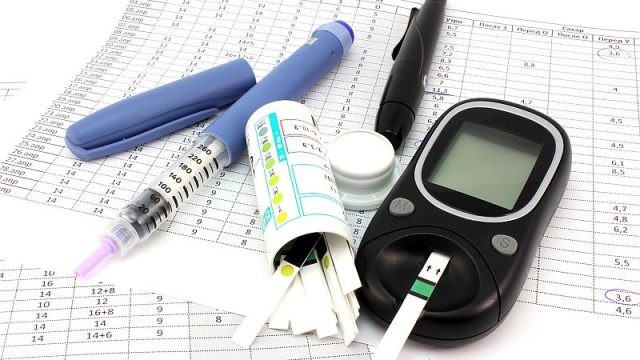
9September
2019
Latest Diabetes News FRIDAY, Sept. 6, 2019 (HealthDay News) — U.S. adults with diabetes are no more likely to meet disease control targets than they were in 2005, a new study finds. Typically, diabetes treatment focuses on controlling blood sugar, blood pressure and cholesterol levels, as well as not smoking. For the study, Massachusetts General Hospital researchers analyzed data on diabetes care in the United States from 2005 through 2016. The investigators found that one in four adults with diabetes was not diagnosed, and nearly one in three was not receiving appropriate care for diabetes. “Fewer than one in four American adults with diagnosed diabetes achieve a controlled level of blood sugar, blood pressure and cholesterol and do not smoke tobacco,” said study lead author Pooyan Kazemian, of the hospital’s Medical Practice Evaluation Center. “Our results suggest that, despite major advances in diabetes drug discovery and movement to develop innovative care delivery models over the past two decades, achievement of diabetes care targets has not improved in the United States since 2005,” Kazemian said in a hospital news release. More than 30 million Americans have diabetes. Most have type 2, which is linked to lifestyle. Certain groups of patients were […]

6September
2019
A discovery in mice suggests a new opportunity for reducing the incidence of type 1 diabetes. New research zooms in on a complex cellular mechanism that may explain what triggers type 1 diabetes. Type 1 diabetes is on the rise. Scientists are not exactly sure why this is, but the increase in new cases makes the race to understand this life-threatening condition more urgent than ever. A new study appearing in the journal Science Immunology suggests that a phantom switch causes the body’s immune system to start destroying its insulin, resulting in the onset of diabetes. If this discovery in mice translates to humans, it could enable early detection and the development of preventive therapies for type 1 diabetes. The problem of diabetes Human cells derive energy from glucose, which is a sugar in the bloodstream. Insulin, a hormone produced by beta cells in the pancreas’ islets of Langerhans, allows the body to absorb glucose. In a healthy individual, the beta cells produce enough insulin to allow the body to consume the available glucose in the bloodstream. However, a lack of sufficient insulin can be fatal. In type 1 diabetes, the body’s immune system attacks and destroys insulin and the […]

5September
2019
Type 2 diabetes prevention tips and facts Exercise prevents diabetes with or without weight loss. While genetics plays an important role in the development of diabetes, individuals still have the ability to influence their health to prevent type 2 diabetes. There is no known way to prevent type 1 diabetes. This article focuses on ways to control risk factors for type 2 diabetes. Obesity and a sedentary lifestyle are the biggest diabetes risk factors that are controllable. People should watch their weight and exercise on a regular basis to help reverse prediabetes, and prevent the development of type 2 diabetes. Diet is important because it helps with weight loss. Some foods such as nuts in small amounts provide health benefits in blood sugar regulation. There is no single recommended diabetes prevention diet, but following a sound nutrition plan and maintaining a healthy weight are important steps in preventing the disease. Exercise is beneficial even without weight loss in the prevention of type 2 diabetes. Exercise is even more beneficial with weight loss in the prevention of type 2 diabetes. Smoking is harmful in many ways including increasing the risk of cancer and heart disease. It also increases the risk of […]
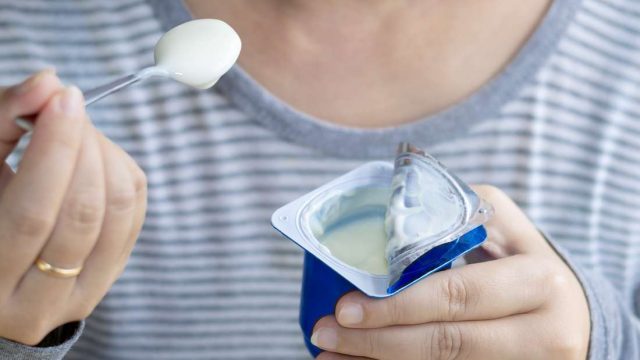
4September
2019
You have chosen to share the following article: How elderberries can help you fight the flu To proceed, simply complete the form below, and a link to the article will be sent by email on your behalf.Note: Please don’t include any URLs in your comments, as they will be removed upon submission. We do not store details you enter into this form. Please see our privacy policy for more information. Message sent successfully The details of this article have been emailed on your behalf. Click here to return to the Medical News Today home page.
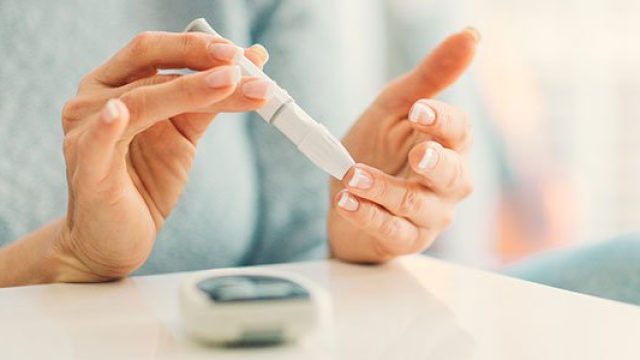
4September
2019
What brand names are available for rosiglitazone/metformin? Avandamet Is rosiglitazone/metformin available as a generic drug? Yes Do I need a prescription for rosiglitazone/metformin? Yes What are the side effects of rosiglitazone/metformin? The most common side effects include Taking Avandamet with food may help lessen some of these side effects. Other commonly reported side effects include Rare but serious side effects include new or Metformin can cause a rare but serious condition known as lactic acidosis, a build-up of acid in the blood. Lactic acidosis can cause death and requires immediate treatment. Symptoms of lactic acidosis include Patients suspected of have signs or symptoms of lactic acidosis must seek emergency medical help. What is the dosage for rosiglitazone/metformin? The dosage of Avandamet should be individualized based on patient response and tolerability. It is generally given in divided doses with meals. For patients inadequately controlled on diet and exercise Generally, the recommended starting dose of Avandamet is 2/500 mg administered once or twice daily. A starting dose of 2/500 mg twice daily may be considered for patients with HbA1c >11% or fasting plasma glucose (FPG) >270 mg//dL. If patients are not adequately controlled after 4 weeks of treatment the dosage may be […]
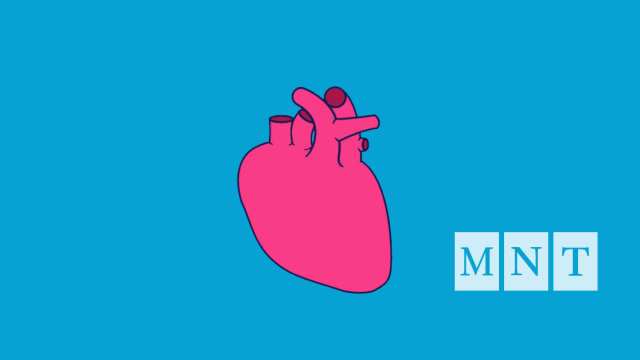
31August
2019
What is Toujeo? Toujeo is a brand-name prescription medication. It’s used to treat type 1 and type 2 diabetes. Toujeo contains a form of insulin called insulin glargine, which is classified as a long-acting insulin. Clinical studies tested Toujeo in people with type 1 or type 2 diabetes. The studies showed that after 26 weeks of treatment, Toujeo lowered fasting blood sugar levels by 17 to 61 mg/dL and hemoglobin A1c (HbA1c) by 0.4 to 1.42. Toujeo is available in two different prefilled pens that are used to inject insulin under the skin (subcutaneous). Toujeo SoloStar: This pen contains 450 units of insulin glargine in 1.5 mL of solution. It can give up to 80 units of insulin glargine in a single injection. Toujeo Max SoloStar: This pen contains 900 units of insulin glargine in 3 mL of solution. It can give up to 160 units of insulin glargine in a single injection. Toujeo generic Toujeo is a brand-name drug. It’s not currently available as a generic drug. Toujeo contains a long-acting form of insulin called insulin glargine. Insulin glargine is also available as the brand-name drugs Lantus and Basaglar. Toujeo side effects Toujeo can cause mild or serious side […]
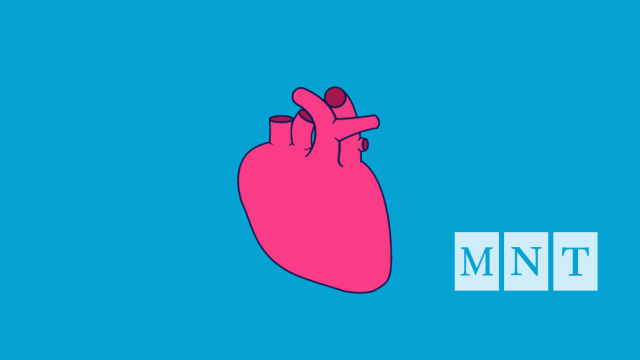
31August
2019
What is Lantus? Lantus is a brand-name prescription medication. It’s used to improve blood sugar levels in: Lantus contains the drug insulin glargine, which is a long-acting insulin. Lantus is given as an injection just under your skin (subcutaneous injection). The drug comes in the form of a solution (liquid mixture). The solution is in a 10 mL vial that has 100 units of insulin glargine per mL. The vial is used with needles, which aren’t included with the vial. Lantus also comes as a prefilled SoloStar pen. Each pen contains 3 mL of drug solution that has 100 units of insulin per mL of solution. Effectiveness Lantus has been found effective at improving blood sugar levels in people with type 1 and type 2 diabetes. In clinical studies, Lantus was tested with mealtime insulin in adults with type 1 diabetes. After 28 weeks of treatment, Lantus reduced fasting blood sugar levels by 20 to 21 mg/dL. Fasting blood sugar levels are tested after waking up in the morning or after not eating for 8 to 12 hours. In a 28-week clinical study involving children with type 1 diabetes, Lantus reduced fasting blood sugar levels by 23 mg/dL. Lantus has […]

30August
2019
You have chosen to share the following article: How elderberries can help you fight the flu To proceed, simply complete the form below, and a link to the article will be sent by email on your behalf.Note: Please don’t include any URLs in your comments, as they will be removed upon submission. We do not store details you enter into this form. Please see our privacy policy for more information. Message sent successfully The details of this article have been emailed on your behalf. Click here to return to the Medical News Today home page.

30August
2019
You have chosen to share the following article: How elderberries can help you fight the flu To proceed, simply complete the form below, and a link to the article will be sent by email on your behalf.Note: Please don’t include any URLs in your comments, as they will be removed upon submission. We do not store details you enter into this form. Please see our privacy policy for more information. Message sent successfully The details of this article have been emailed on your behalf. Click here to return to the Medical News Today home page.

30August
2019
You have chosen to share the following article: How elderberries can help you fight the flu To proceed, simply complete the form below, and a link to the article will be sent by email on your behalf.Note: Please don’t include any URLs in your comments, as they will be removed upon submission. We do not store details you enter into this form. Please see our privacy policy for more information. Message sent successfully The details of this article have been emailed on your behalf. Click here to return to the Medical News Today home page.

30August
2019
You have chosen to share the following article: How elderberries can help you fight the flu To proceed, simply complete the form below, and a link to the article will be sent by email on your behalf.Note: Please don’t include any URLs in your comments, as they will be removed upon submission. We do not store details you enter into this form. Please see our privacy policy for more information. Message sent successfully The details of this article have been emailed on your behalf. Click here to return to the Medical News Today home page.

29August
2019
You have chosen to share the following article: How elderberries can help you fight the flu To proceed, simply complete the form below, and a link to the article will be sent by email on your behalf.Note: Please don’t include any URLs in your comments, as they will be removed upon submission. We do not store details you enter into this form. Please see our privacy policy for more information. Message sent successfully The details of this article have been emailed on your behalf. Click here to return to the Medical News Today home page.

29August
2019
You have chosen to share the following article: How elderberries can help you fight the flu To proceed, simply complete the form below, and a link to the article will be sent by email on your behalf.Note: Please don’t include any URLs in your comments, as they will be removed upon submission. We do not store details you enter into this form. Please see our privacy policy for more information. Message sent successfully The details of this article have been emailed on your behalf. Click here to return to the Medical News Today home page.
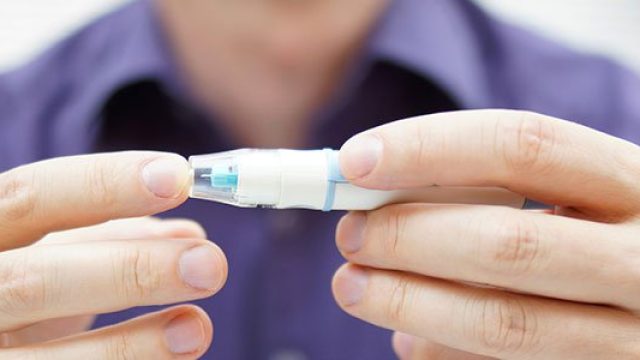
28August
2019
Diabetes insipidus facts* *Diabetes insipidus facts Medically Edited by: Melissa Conrad Stöppler, MD Diabetes insipidus is not related to diabetes mellitus (type 1 and type 2 diabetes). Diabetes insipidus is caused by problems related to the antidiuretic hormone (ADH) or its receptor and causes frequent urination. There are four types of diabetes insipidus; 1) central diabetes insipidus, 2) nephrogenic diabetes insipidus, 3) dipsogenic diabetes insipidus, and 4) gestational diabetes insipidus. The most common symptom of diabetes insipidus is frequent urination. The diagnosis for diabetes insipidus is based on a series of tests (for example, urinalysis and fluid deprivation test). The treatment for diabetes insipidus depends on the type of diabetes insipidus. Diabetes can lead to chronic kidney disease. Diabetes is the most common cause of kidney failure in the US. Diabetes Insipidus Definition Excessive urination and extreme thirst as a result of inadequate output of the pituitary hormone ADH (antidiuretic hormone, also called vasopressin) or the lack of the normal response by the kidney to ADH. There are two types of diabetes insipidus — central and nephrogenic. Central diabetes insipidus is a lack of ADH production and is due to damage to the pituitary gland or hypothalamus where ADH is […]
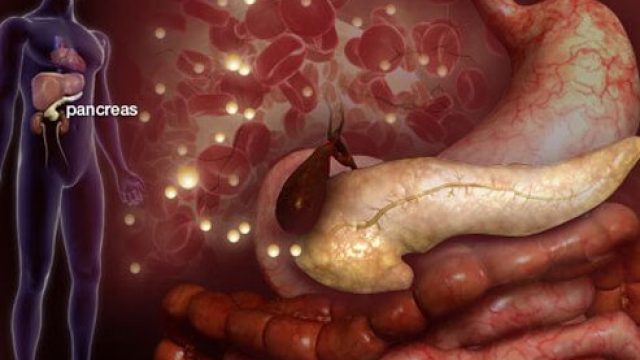
28August
2019
What is diabetes? Diabetes mellitus is a group of metabolic diseases, all of which have in common high blood sugar (glucose) levels that result from problems with insulin secretion, its action, or both. Normally, blood glucose levels are tightly controlled by a hormone produced by the pancreas known as insulin. When blood glucose levels rise (for example, after eating food), insulin is released from the pancreas to normalize the glucose level. What is type 1 diabetes? An absolute lack of insulin, usually due to destruction of the insulin-producing beta cells of the pancreas, is the main problem in type 1 diabetes. Type 1 diabetes was formerly referred to as juvenile diabetes or insulin-dependent diabetes mellitus (IDDM). Its causes are different from type II diabetes, as will be reviewed in this article. What is type 2 diabetes? Type 2 diabetes was previously called non-insulin dependent diabetes mellitus (NIDDM), or adult onset diabetes mellitus (AODM). People who have type 2 diabetes can still produce insulin, but do so relatively inadequately for their body’s needs. Type 2 diabetes typically occurs in individuals over 30 years of age, and its incidence increases with advancing age. In contrast, type 1 diabetes is most often diagnosed […]
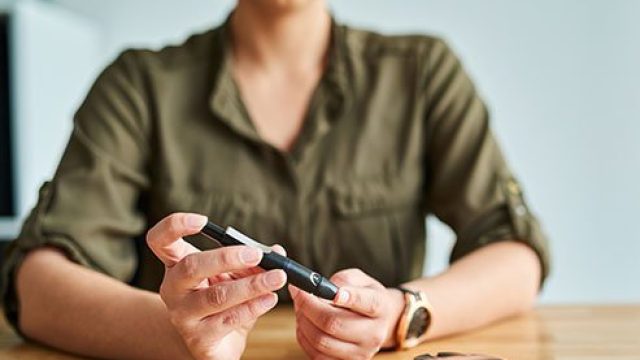
27August
2019
Type 2 diabetes definition and facts Type 2 diabetes symptoms can be managed by diligently controlling blood sugar levels. Type 2 diabetes is a condition in which cells cannot use blood sugar (glucose) efficiently for energy. This happens when the cells become insensitive to insulin and the blood sugar gradually gets too high. There are two types of diabetes mellitus, type 1 and type 2. In type 2, the pancreas still makes insulin, but the cells cannot use it very efficiently. In type 1 diabetes, the pancreas cannot make insulin due to auto-immune destruction of the insulin-producing beta cells. Type 2 can be caused by: Risk factors include: Having family members with diabetes Being overweight Being sedentary including watching more than 2 hours of TV per day Drinking soda Consuming too much sugar and processed food The signs and symptoms of this type of diabetes are sometimes subtle. The major symptom is often being overweight. Other symptoms and signs include: Excess thirst Urinating a lot Gaining or losing weight unintentionally Dark skin under armpits, chin, or groin Fatigue Unusual odor to urine Blurry vision Often there are no specific symptoms of the condition and it goes undiagnosed until routine blood […]

26August
2019
Type 1 diabetes definition and facts Type 1 diabetes mellitus (formerly known as insulin-dependent diabetes or juvenile diabetes) is a condition in which the body stops making insulin. This causes the person’s blood glucose level (blood sugar) to increase. There are two types of diabetes, type 1 and type 2. In type 1 diabetes, the immune system attacks the pancreas, which causes the pancreas to stop producing insulin. In type 2 diabetes, the pancreas can produce insulin, but the body cannot use it. The cause of type 1 diabetes is autoimmune destruction of the pancreatic beta cells, which can be caused by viruses and infections as well as other unknown factors. In many cases, the cause is not known. Scientists are looking for cures for type 1 diabetes such as replacing the pancreas or some of its cells. Risk factors for type 1 diabetes are family history, introducing certain foods too soon (fruit) or too late (oats/rice) to babies, and exposure to toxins. Diabetic ketoacidosis, also referred to as simply ketoacidosis or DKA, is a serious and even life-threatening complication of type 1 diabetes Symptoms of type 1 diabetes are Sometimes, there are no significant symptoms. Type 1 diabetes is […]
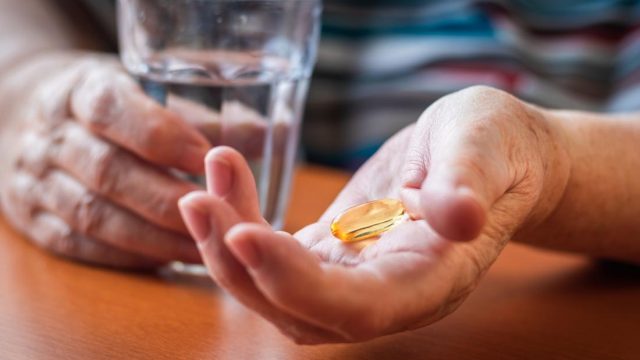
24August
2019
As cases of obesity and diabetes are on the rise, so are their complications. One complication that has recently been a point of focus for the American Heart Association (AHA) is high triglyceride levels. Prescription medication with omega-3 fatty acids may have cardiovascular benefits, new research suggests. Triglycerides are fats in the blood. Some are naturally produced by the liver, while others come from calories that the body doesn’t need to use immediately. The more calories a person takes in, the likelier they are to have a high triglyceride count. Higher levels, calculated as above 200 milligrams per deciliter (mg/dl), can increase a person’s risk of having a stroke or heart attack by causing a narrowing of the arteries. Estimates suggest that around a quarter of the adult population of the United States may have triglyceride levels above 150 mg/dl. Exceedingly high levels — above 500 mg/dl — can also result in inflammation of the pancreas, otherwise known as pancreatitis. Thankfully, there are a few ways to reduce triglyceride levels. Getting regular exercise, reducing alcohol consumption, and eliminating sugar and refined carbohydrates can help, as can other steps to maintain a healthy weight, such as swapping saturated for unsaturated fats. […]

23August
2019
You have chosen to share the following article: How elderberries can help you fight the flu To proceed, simply complete the form below, and a link to the article will be sent by email on your behalf.Note: Please don’t include any URLs in your comments, as they will be removed upon submission. We do not store details you enter into this form. Please see our privacy policy for more information. Message sent successfully The details of this article have been emailed on your behalf. Click here to return to the Medical News Today home page.

23August
2019
You have chosen to share the following article: How elderberries can help you fight the flu To proceed, simply complete the form below, and a link to the article will be sent by email on your behalf.Note: Please don’t include any URLs in your comments, as they will be removed upon submission. We do not store details you enter into this form. Please see our privacy policy for more information. Message sent successfully The details of this article have been emailed on your behalf. Click here to return to the Medical News Today home page.






